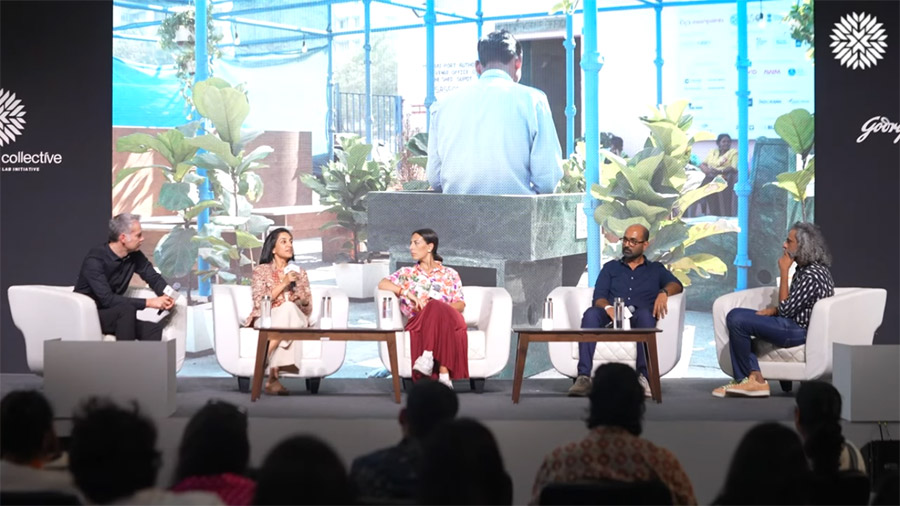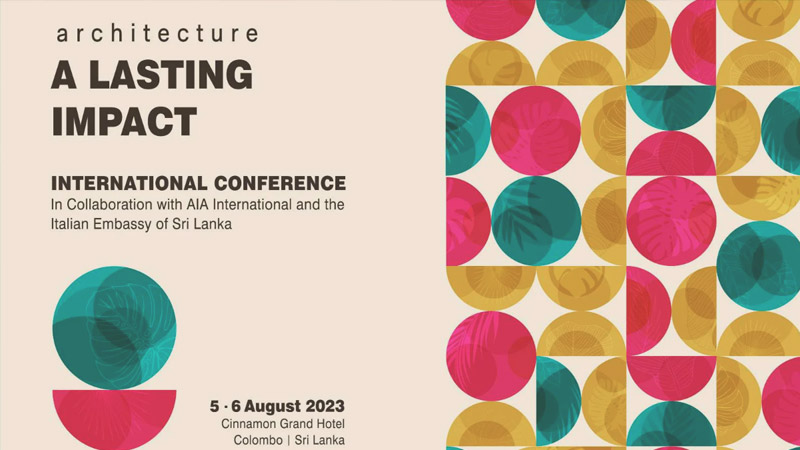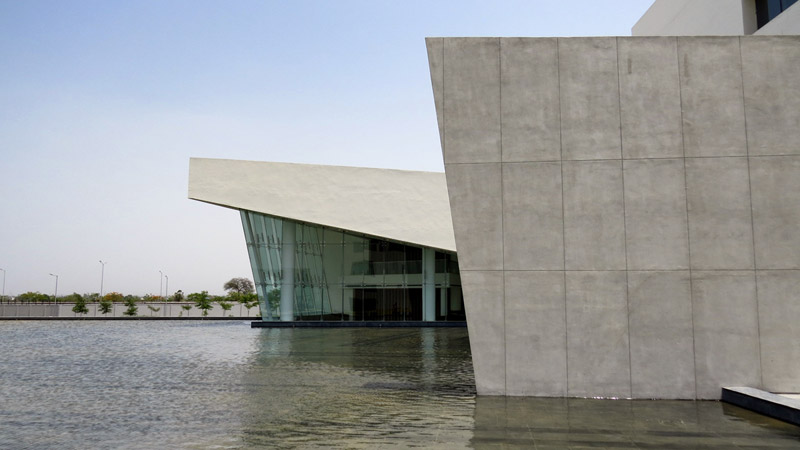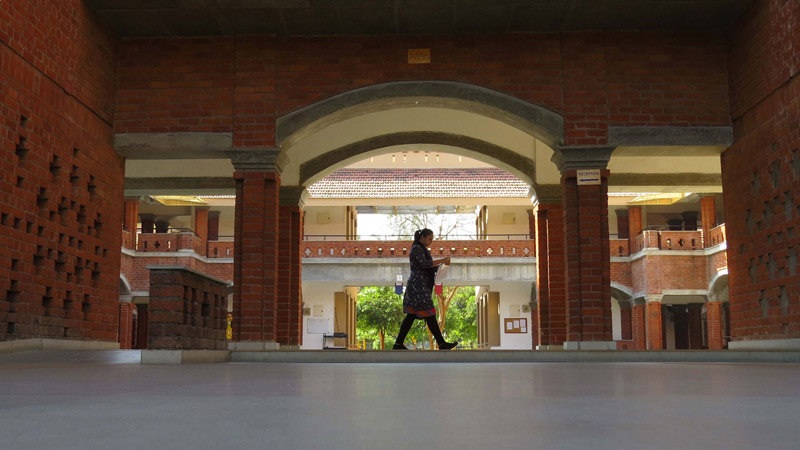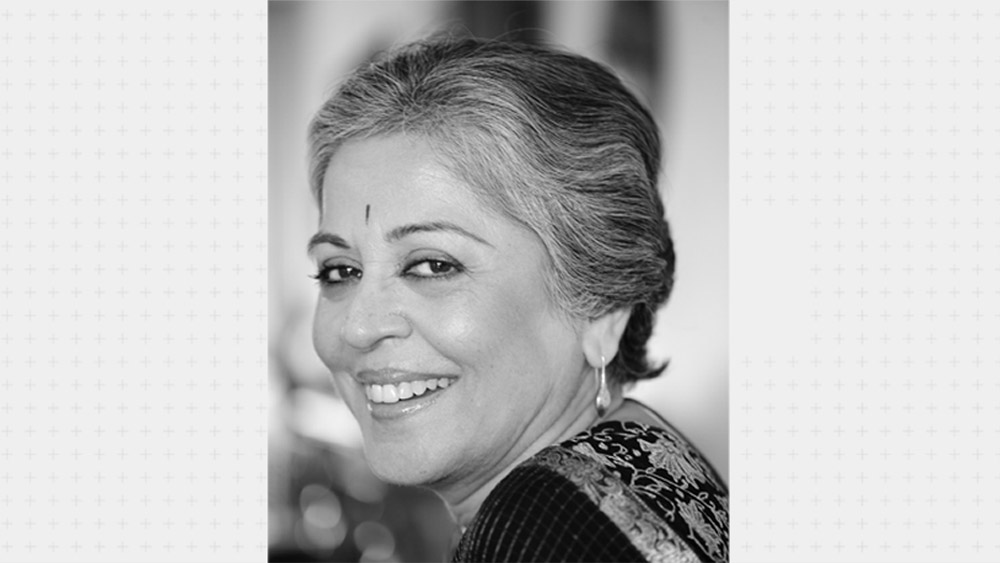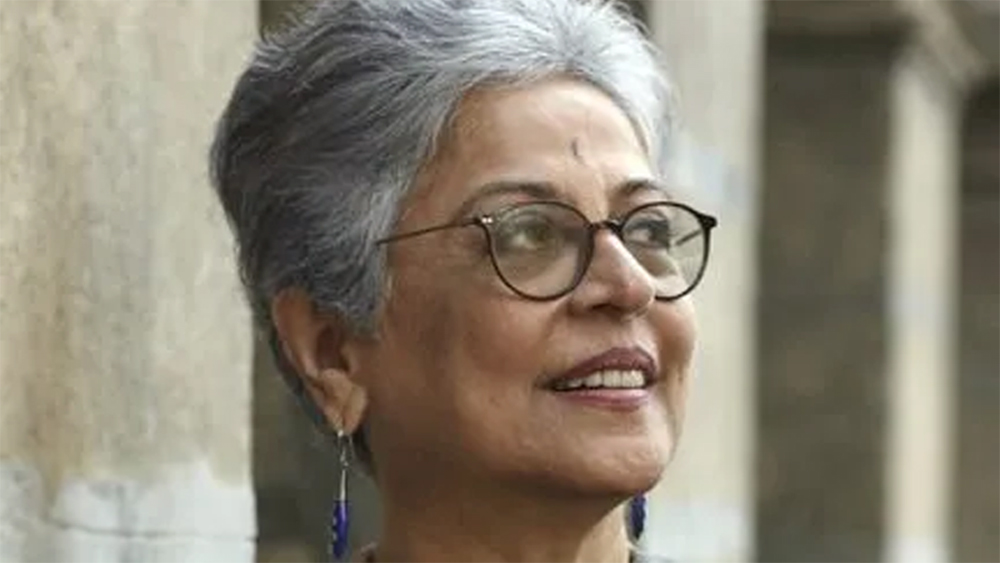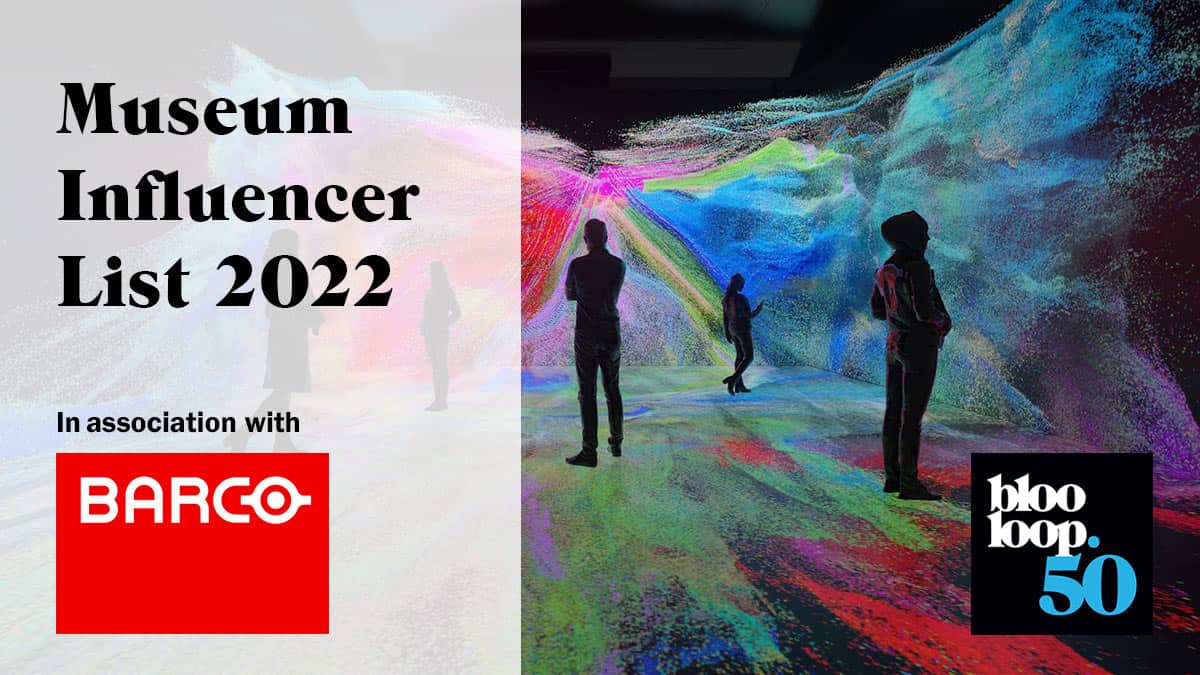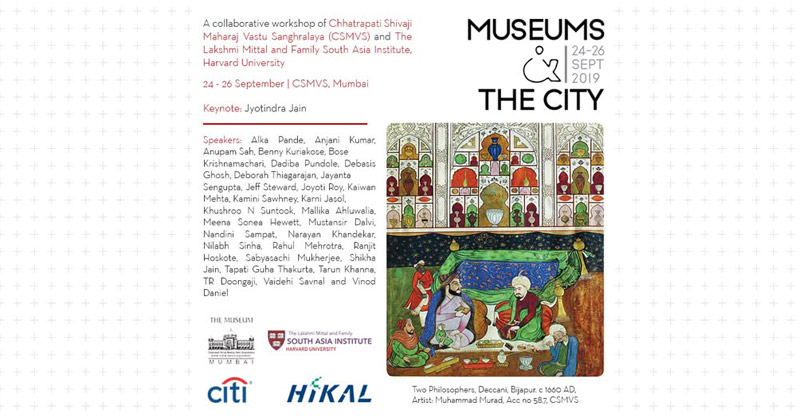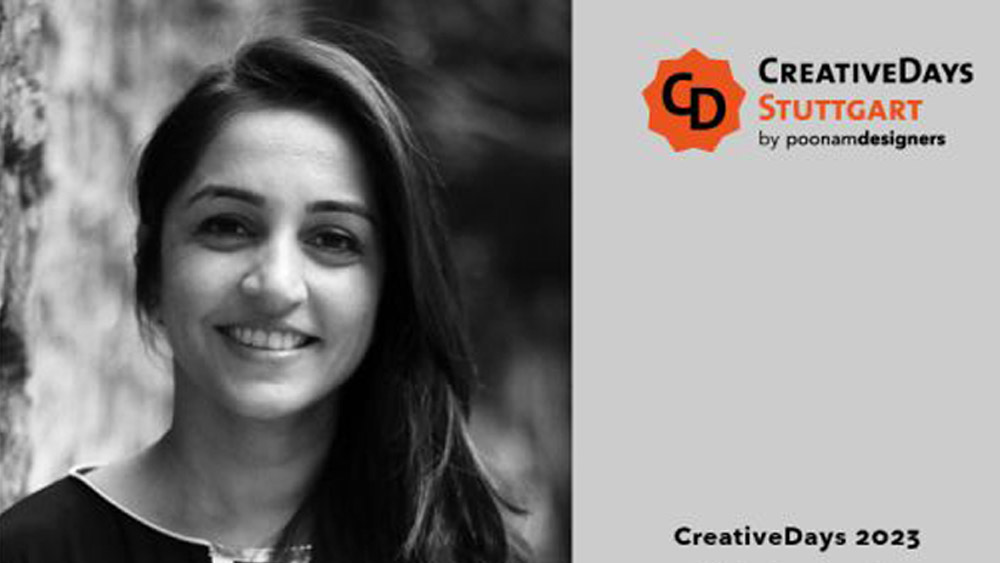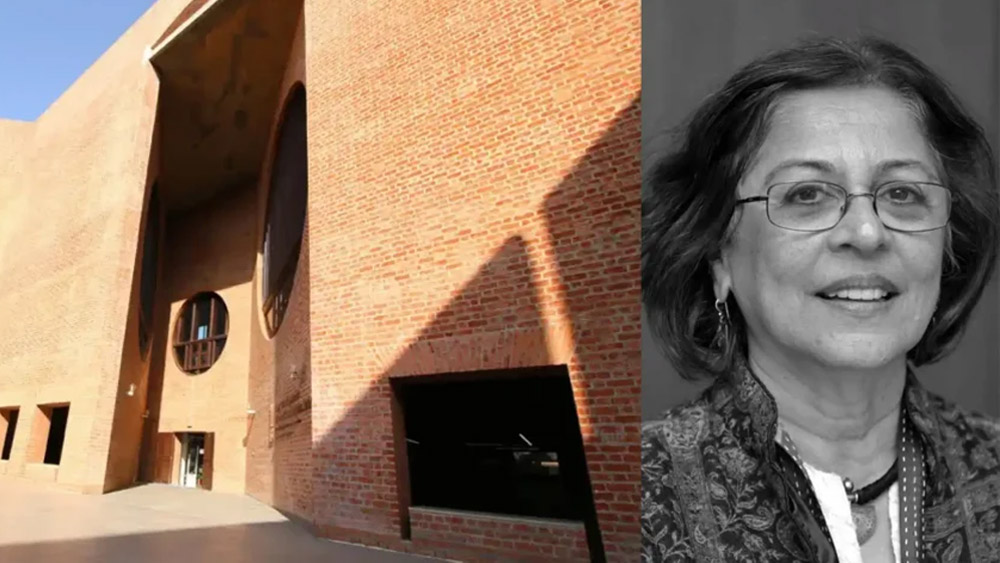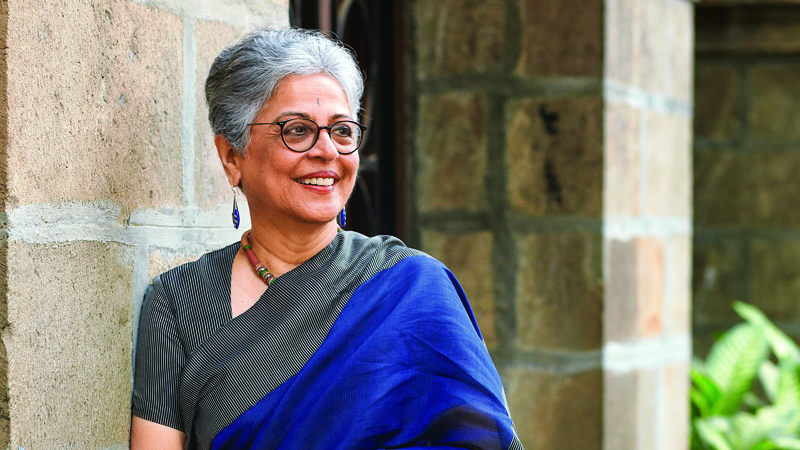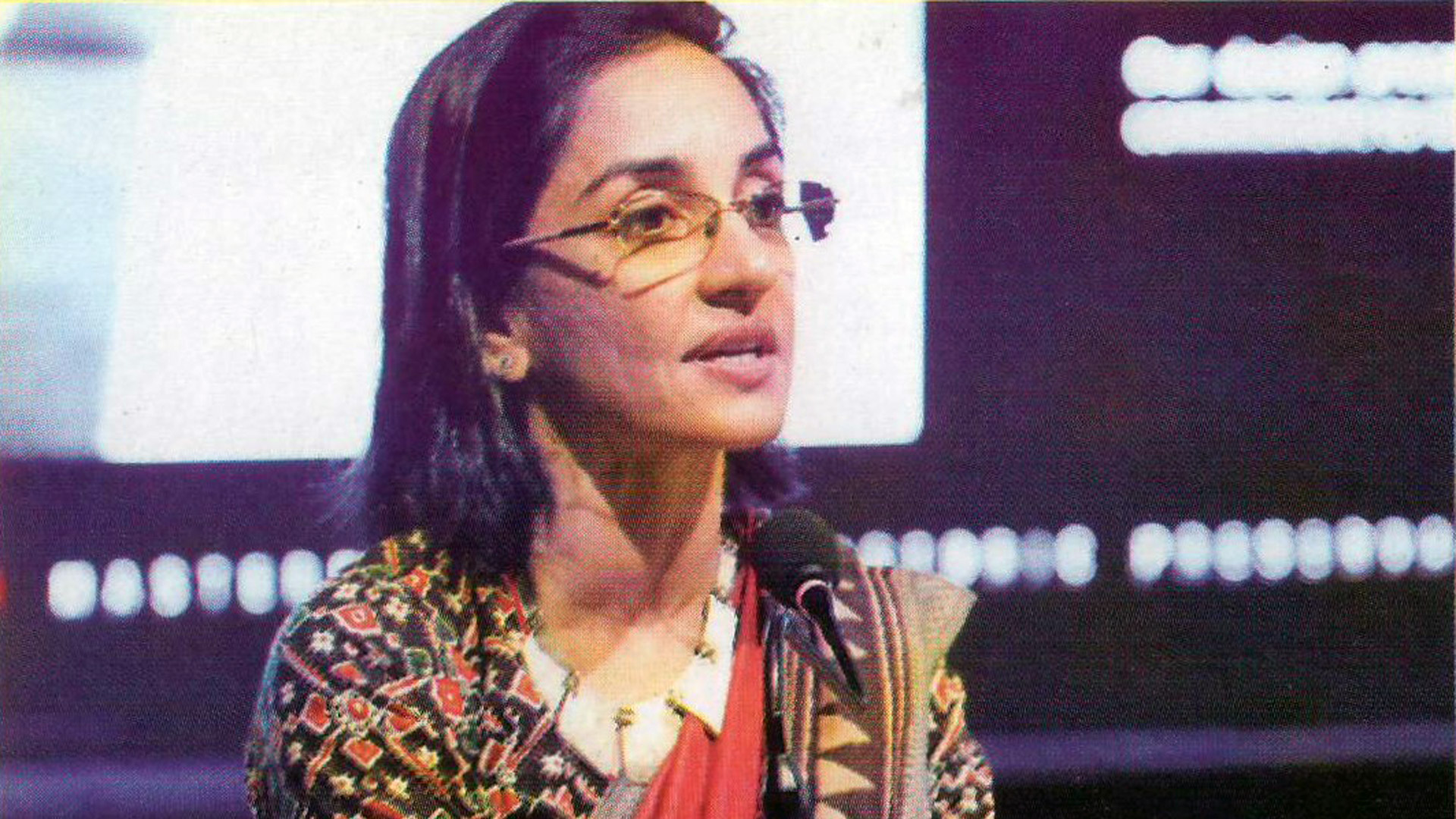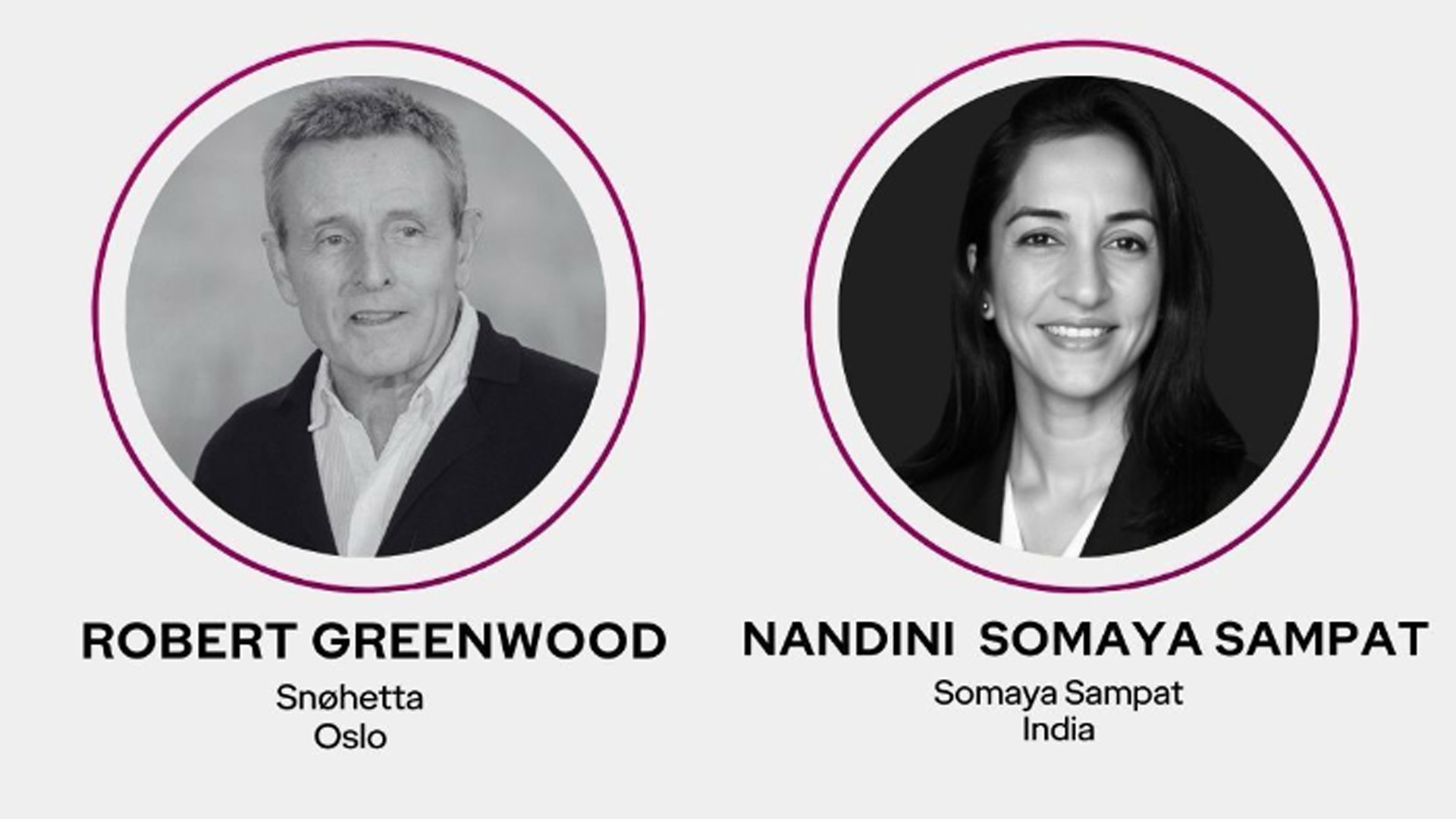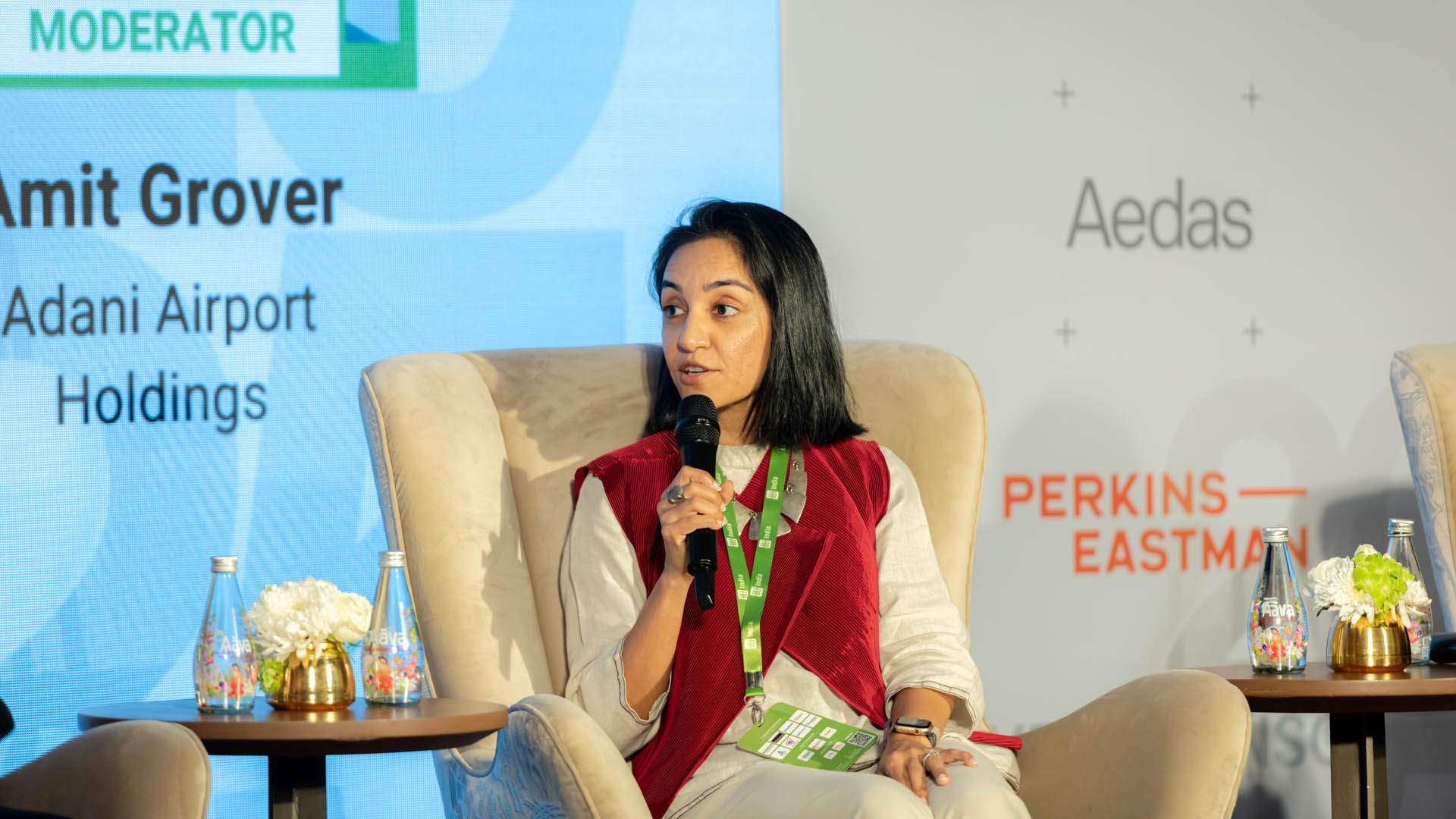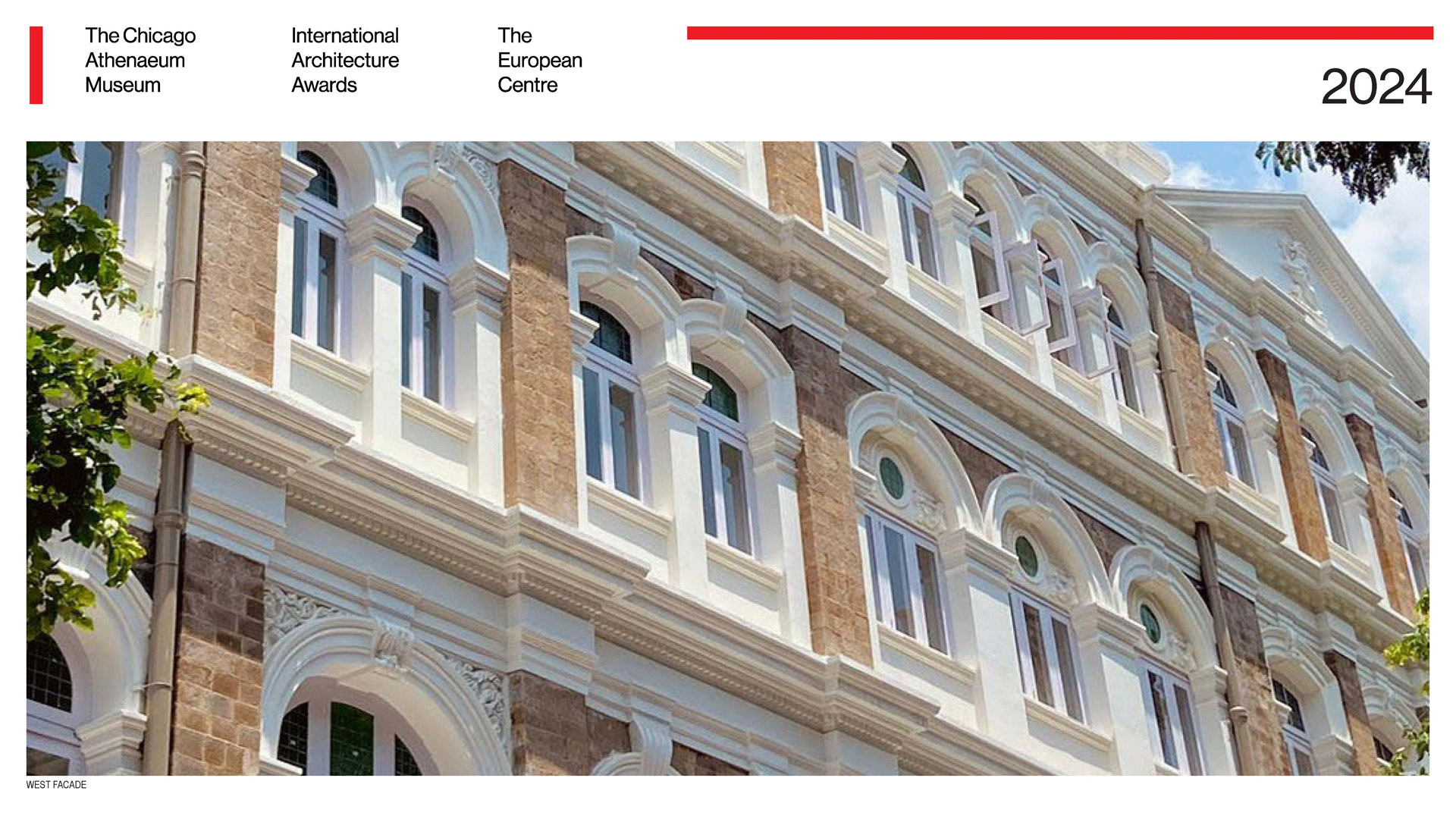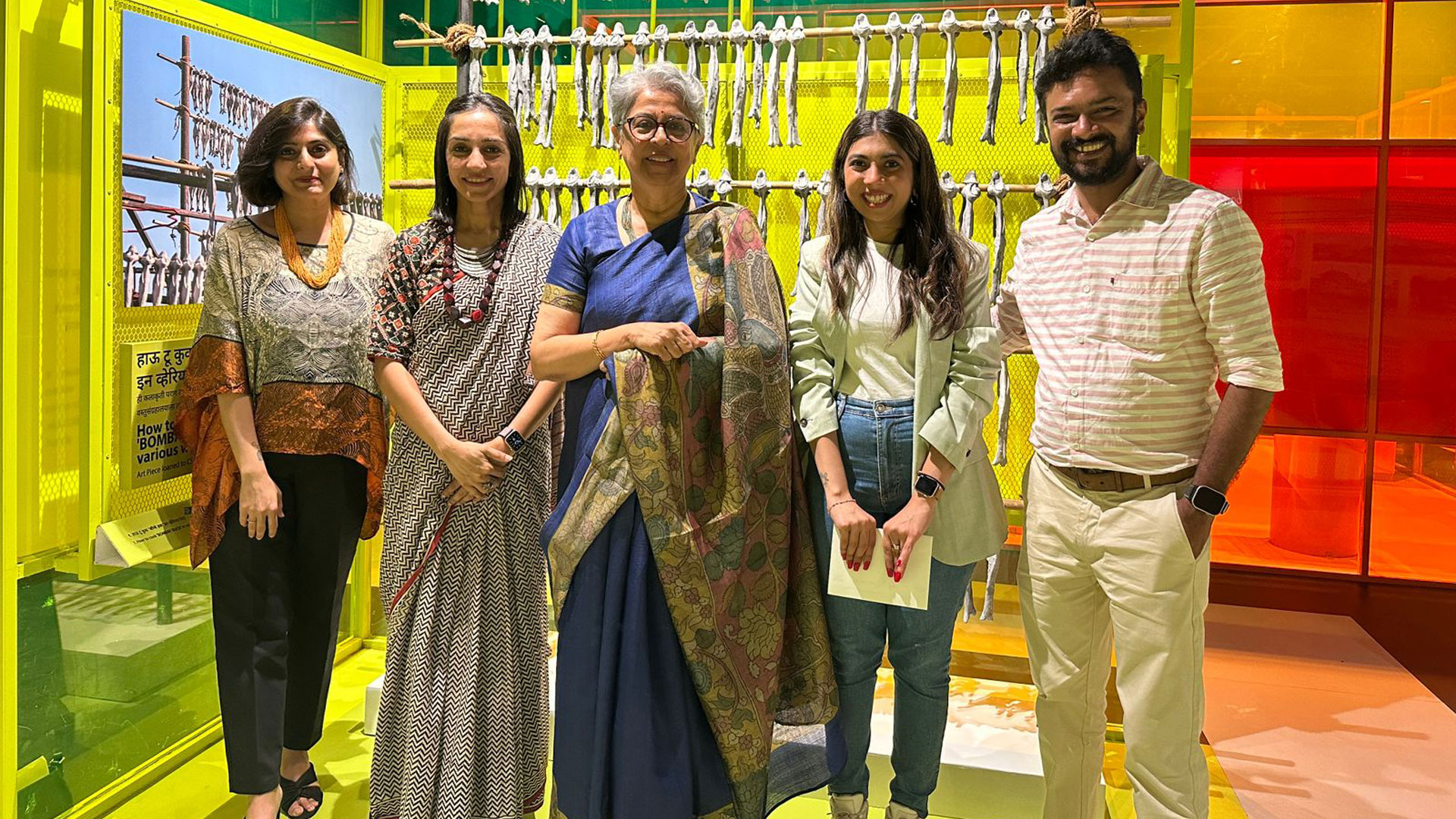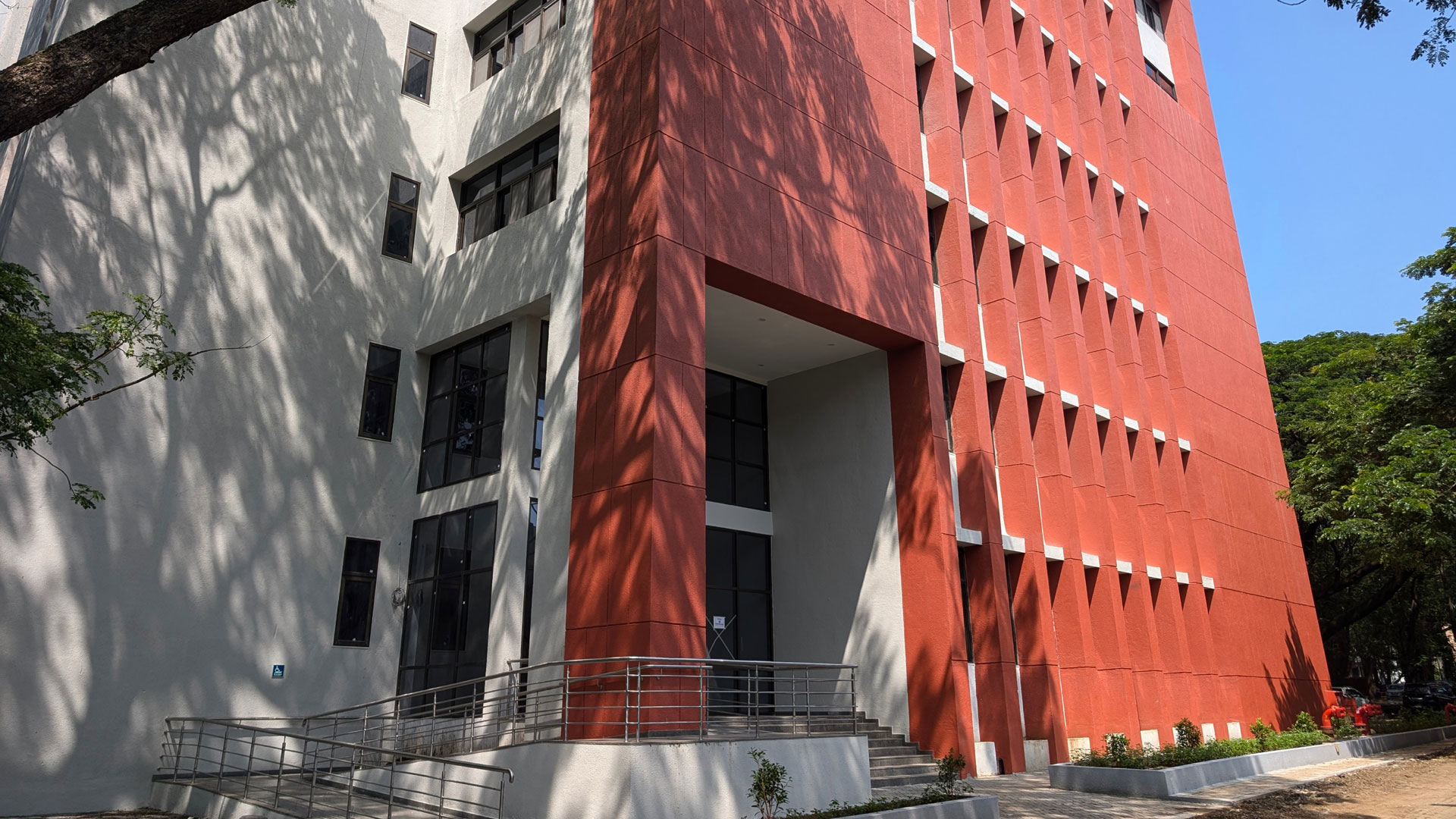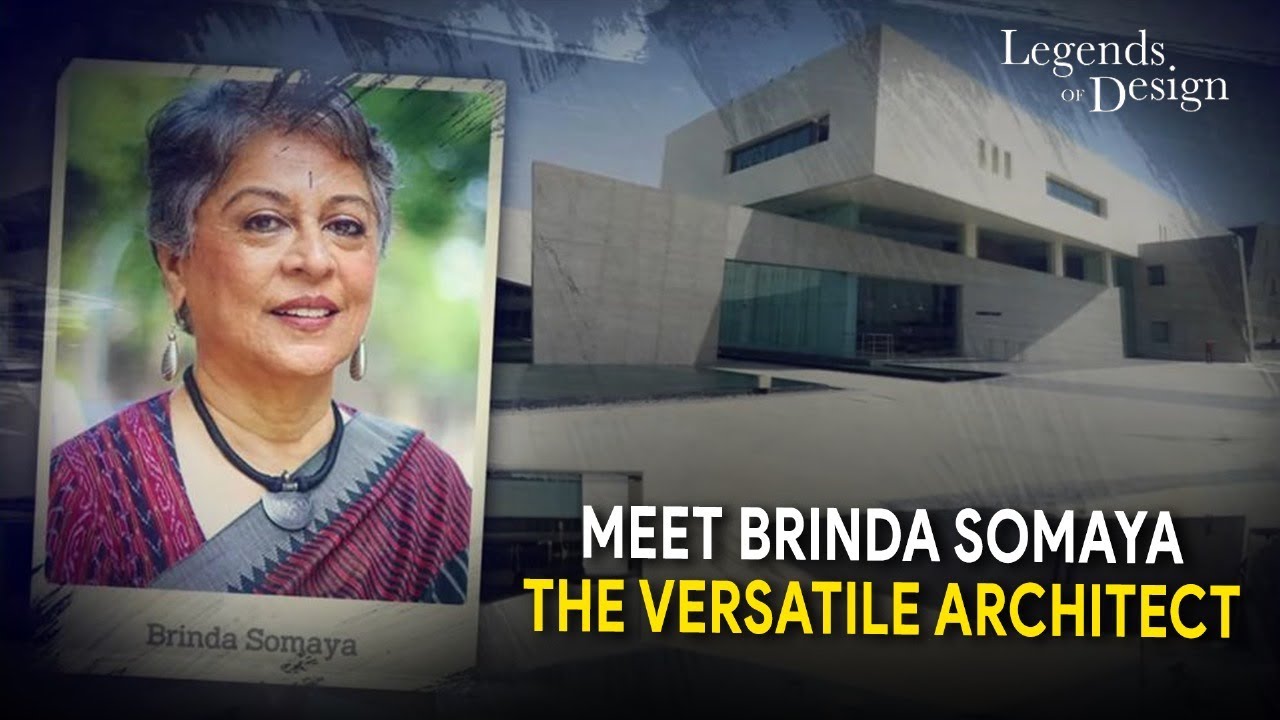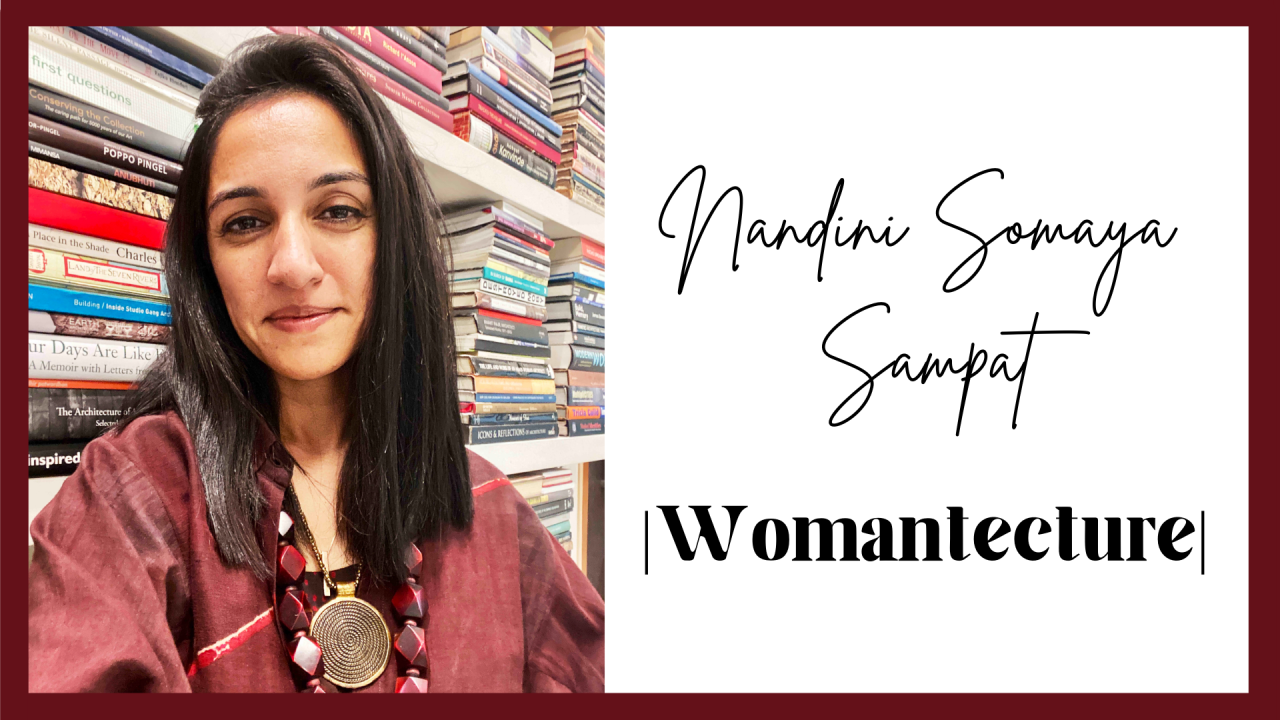-
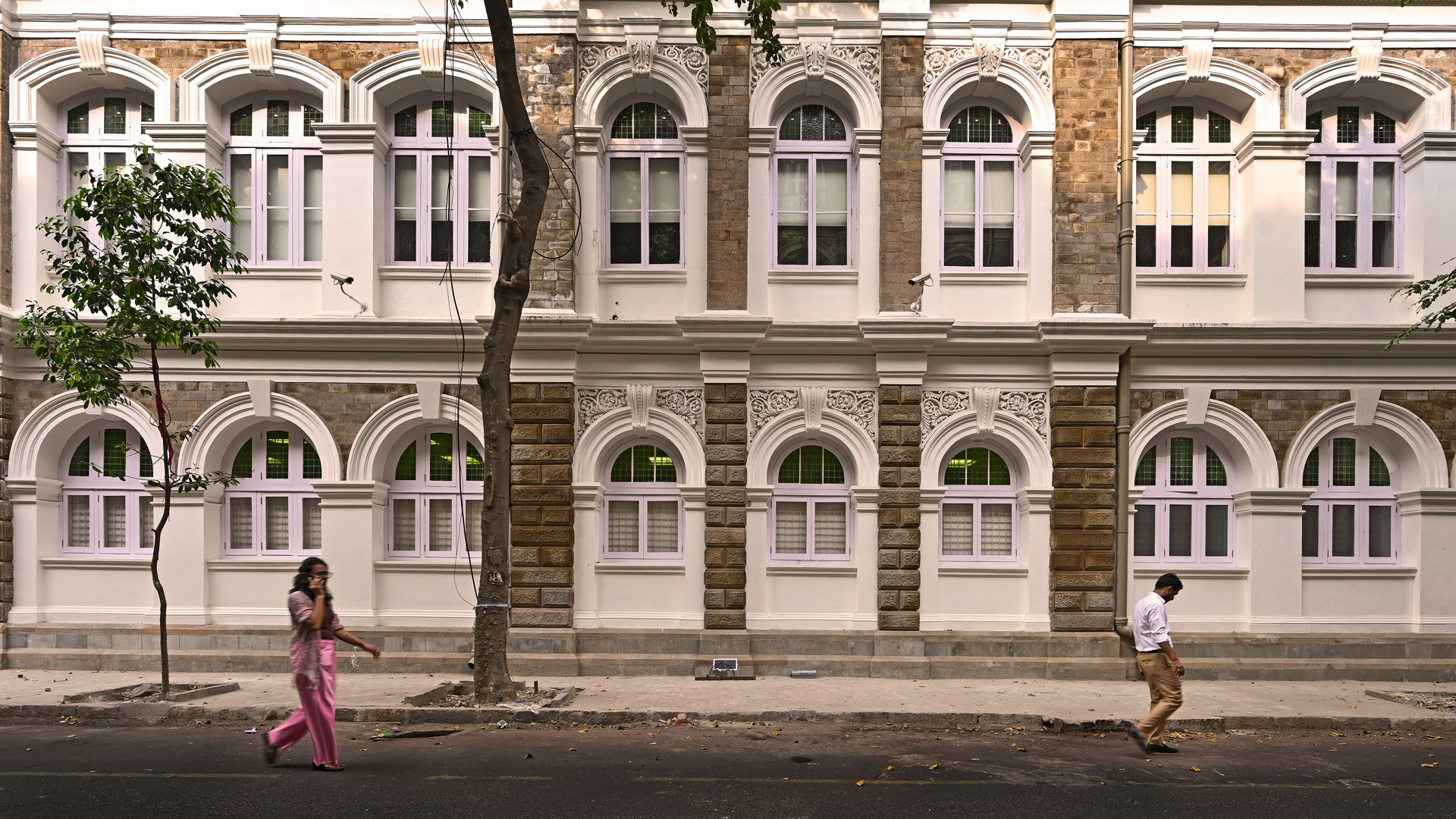 MumbaiThe Cathedral & John Connon School IB School at Thomas House
MumbaiThe Cathedral & John Connon School IB School at Thomas House
An International School that honours Indian Heritage.
The Thomas House was built in the early 1900s in Neoclassical architectural style as the Indian headquarters of Eastman Kodak. The restoration aimed to adaptively reuse the building from a bank to a school while addressing modern structural and safety standards, amidst challenges from ongoing metro construction and severe weather.
This project not only revitalizes the Thomas House but also sets a precedent for preserving similar heritage structures along D.N. Road, contributing to the cultural and historical enrichment of Mumbai.
CLIENT
The Anglo Scottish Education Society (The Cathedral & John Connon School)
BUILT-UP AREA
46,000 sq.ft.
SERVICES
Architecture, Interior Design, Signages, Conservation, Adaptive Reuse
LOCATION
Mumbai, Maharashtra
SITE AREA
12,170 sq.ft.
YEAR OF COMPLETION
2023

Constructed in 1904 as the Indian headquarters of Eastman Kodak, the Kodak House was sold to Deutsche Bank in 1993. Acquired by the Anglo Scottish Education Society in 2017, it was reimagined as an international school, blending its historic legacy with modern educational excellence.
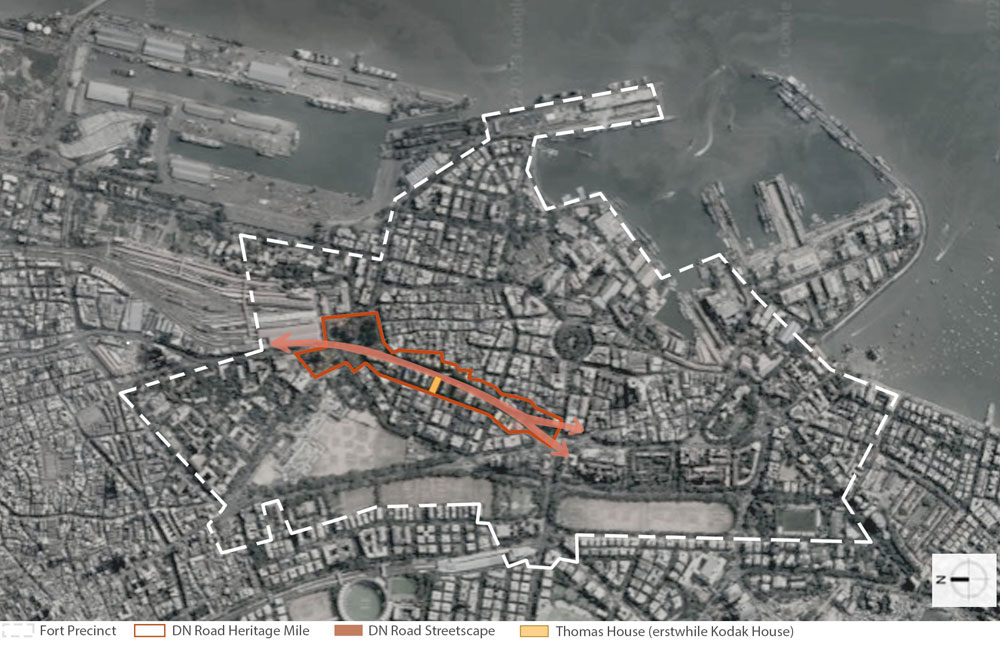
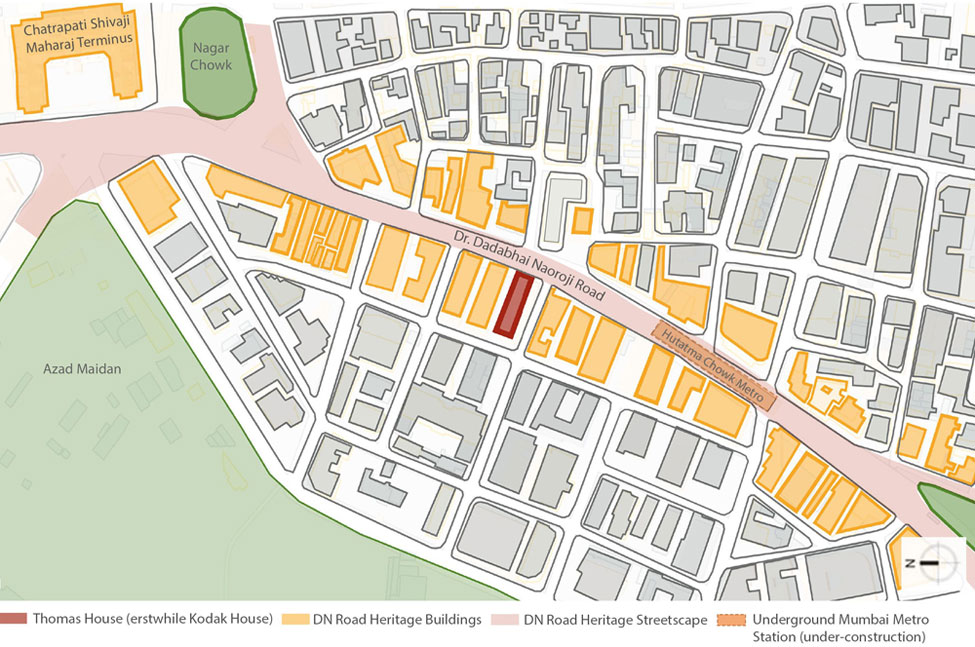

The building is situated at the center of the historic D.N. Road, making it stand out from the rest. Historically, DN Road was envisioned as an administrative and commercial district. The street has been significant for its historic legacy, colonial architecture, role as a commercial hub, cultural and artistic activities, landmarks, and institutions.
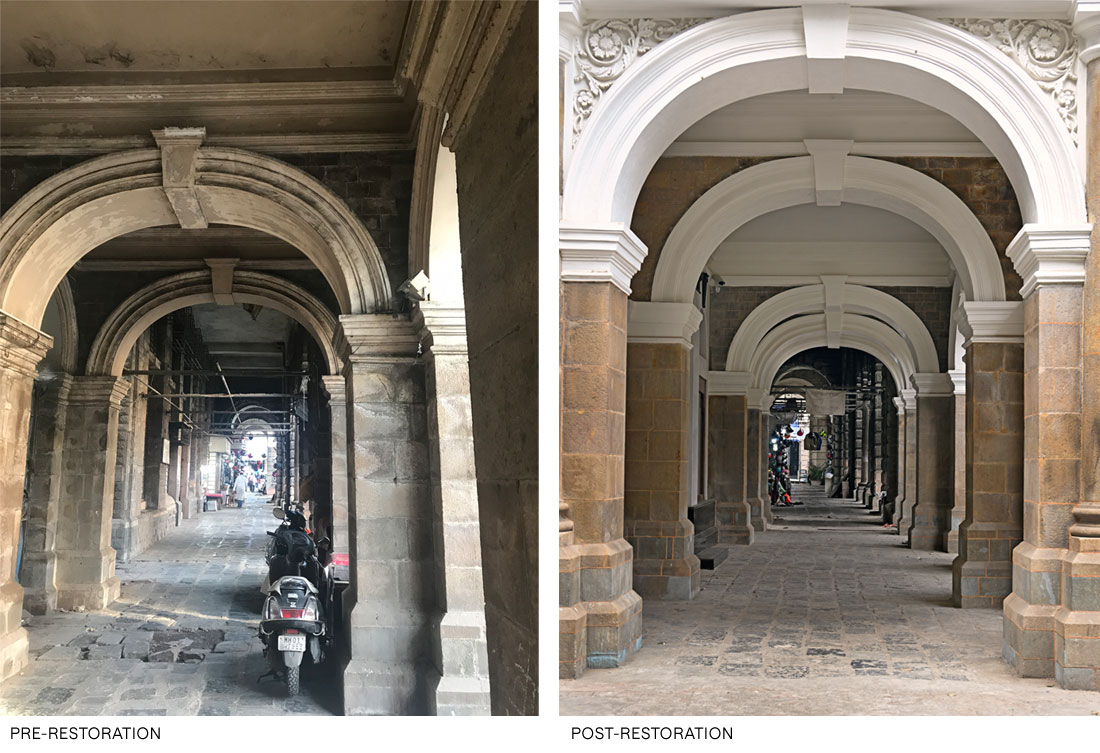
The most significant feature of D.N. Road is its stone arcade that run along many commercial buildings and offices strengthening the identity of the street as the main commercial district of the city. The rusticated stone arcade provides a semi-public space for people and acts as a place of respite amidst the hustle.
The street's importance diminished with changing policies and neglect. Thus, the restoration of this heritage structure will hopefully act as a catalyst for upgradation of similar structures that have deteriorated significantly over the years.
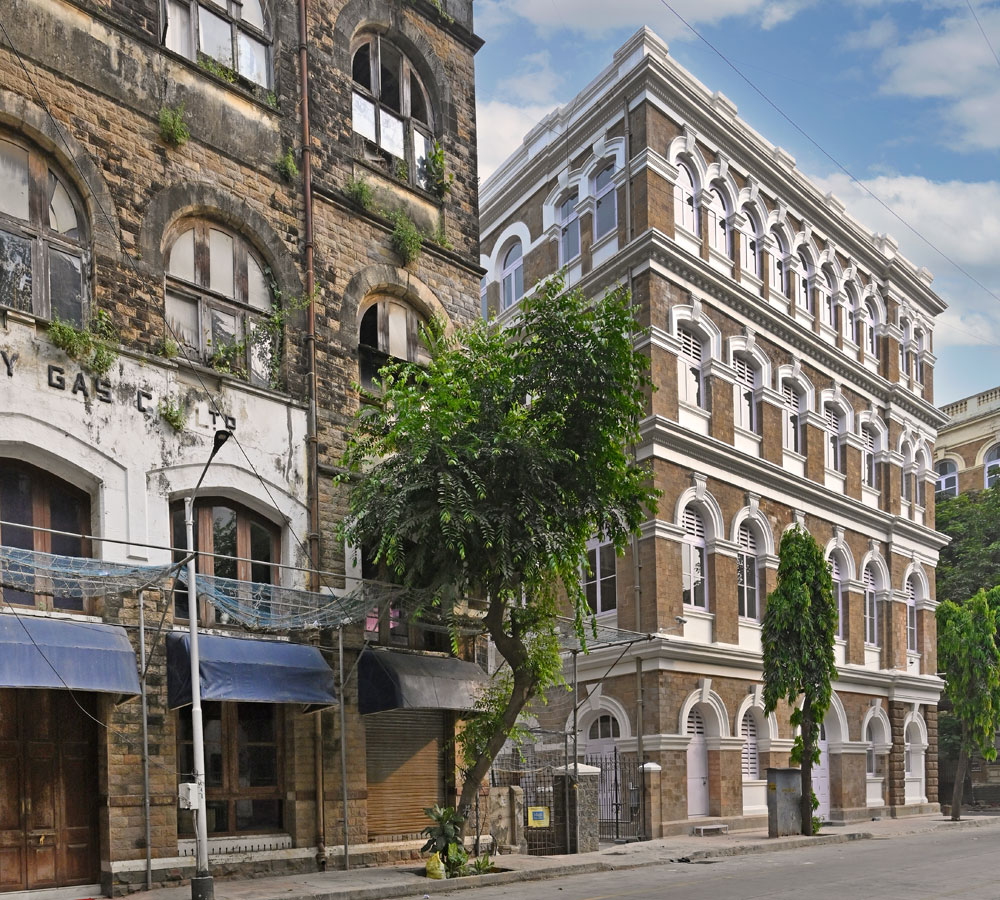
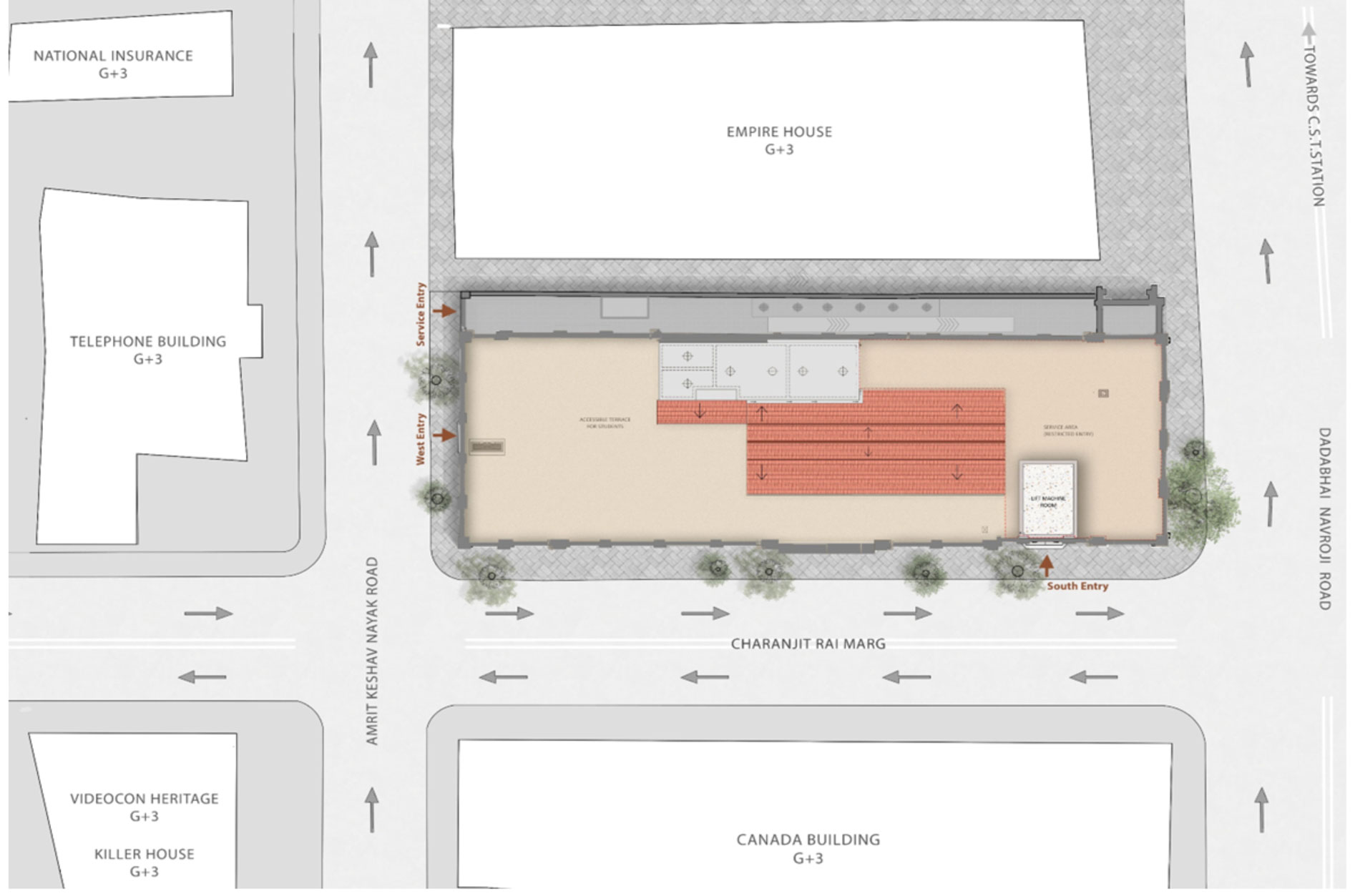
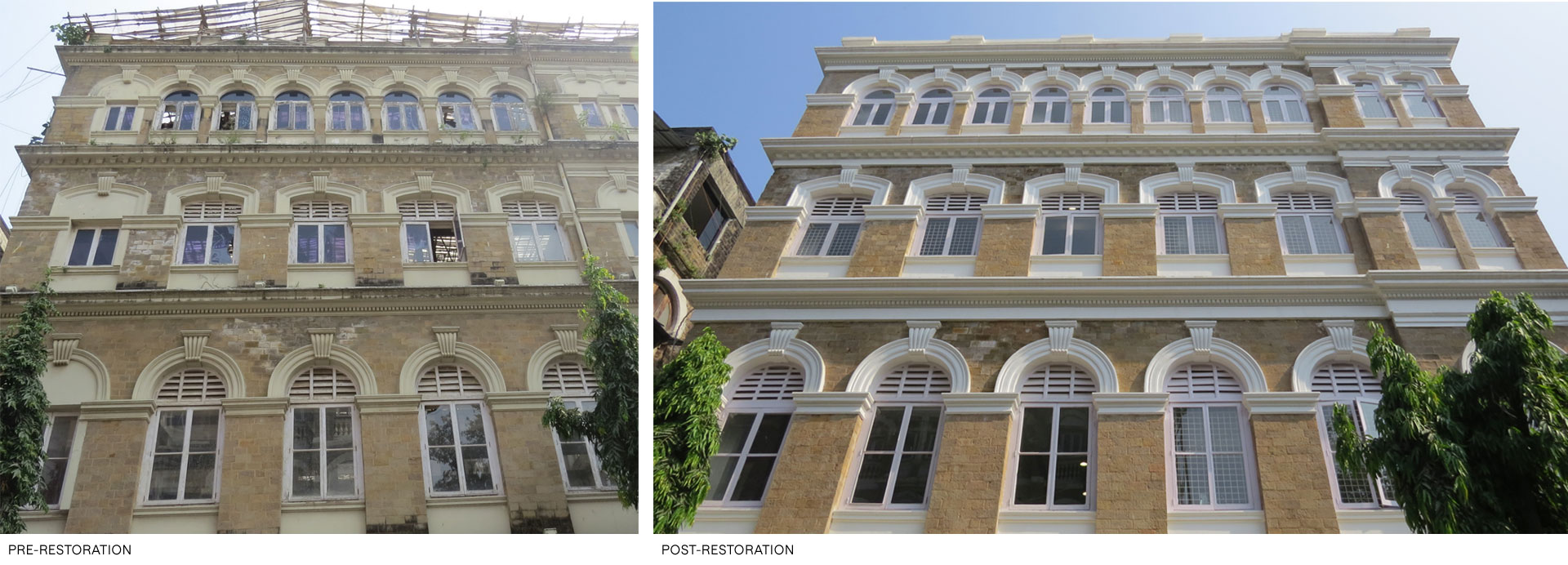
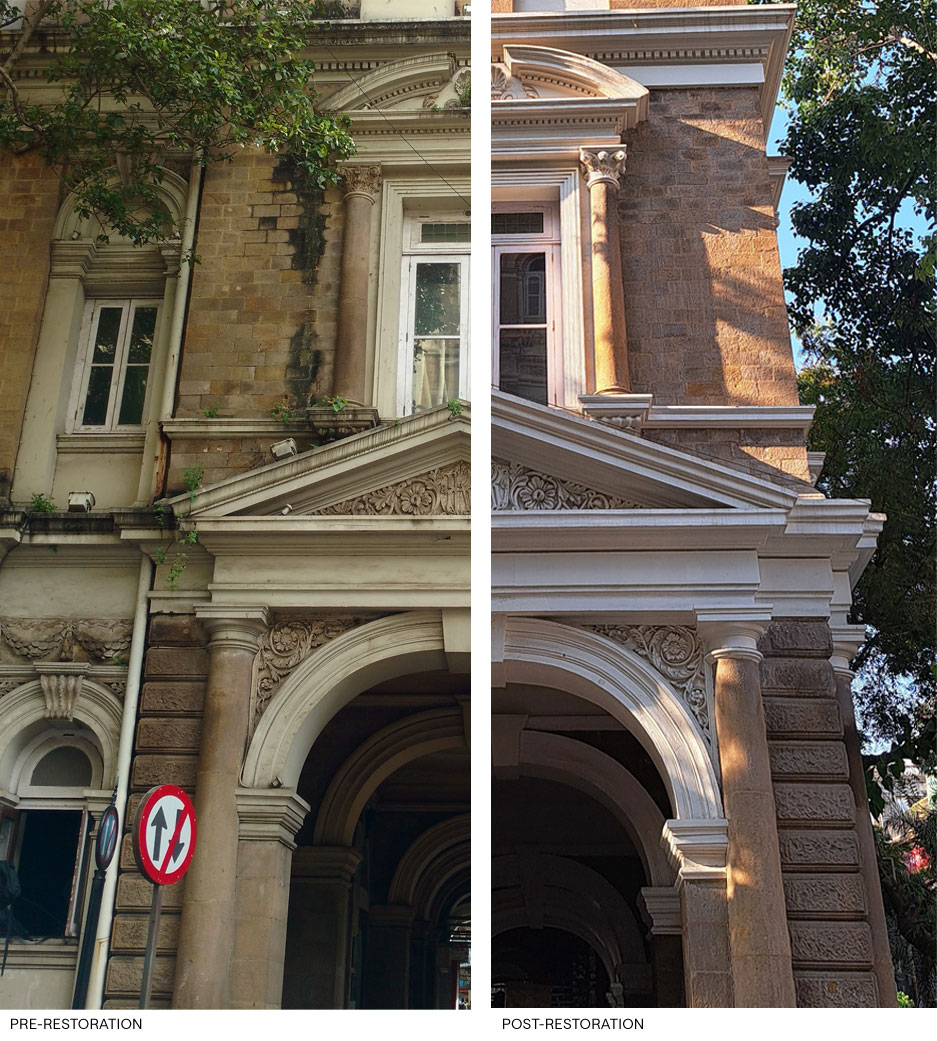
The building façade portrays a wide range of Neoclassical elements such as Corinthian column capitals, triangular pediment adorned with the symbol of the Lion Rampant (the traditional symbol of Britain used in heraldry) in the tympanum and classical embellishment on the semi-circular arches of the façade with ornamented keystones.
This comprehensive endeavour involved meticulous restoration of the building's exterior facade, including the replication of intricate architectural details and engravings lost to time.
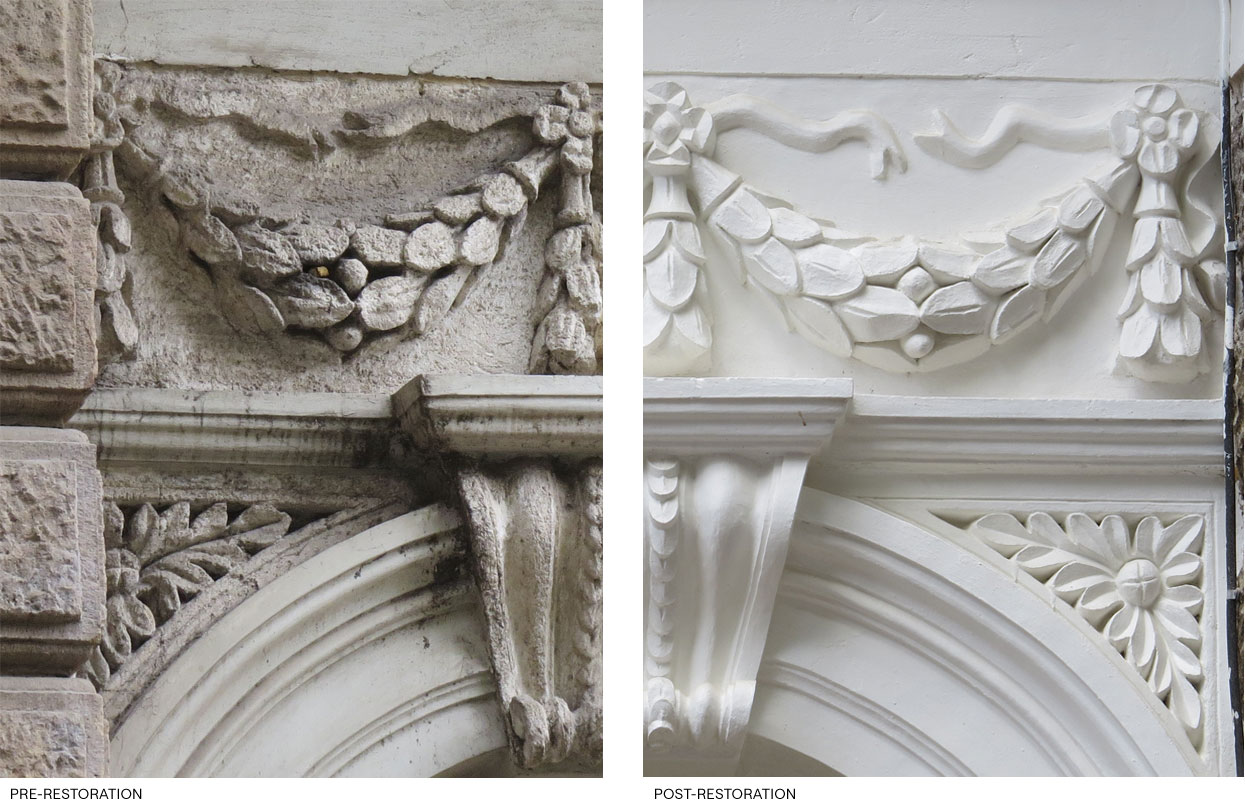
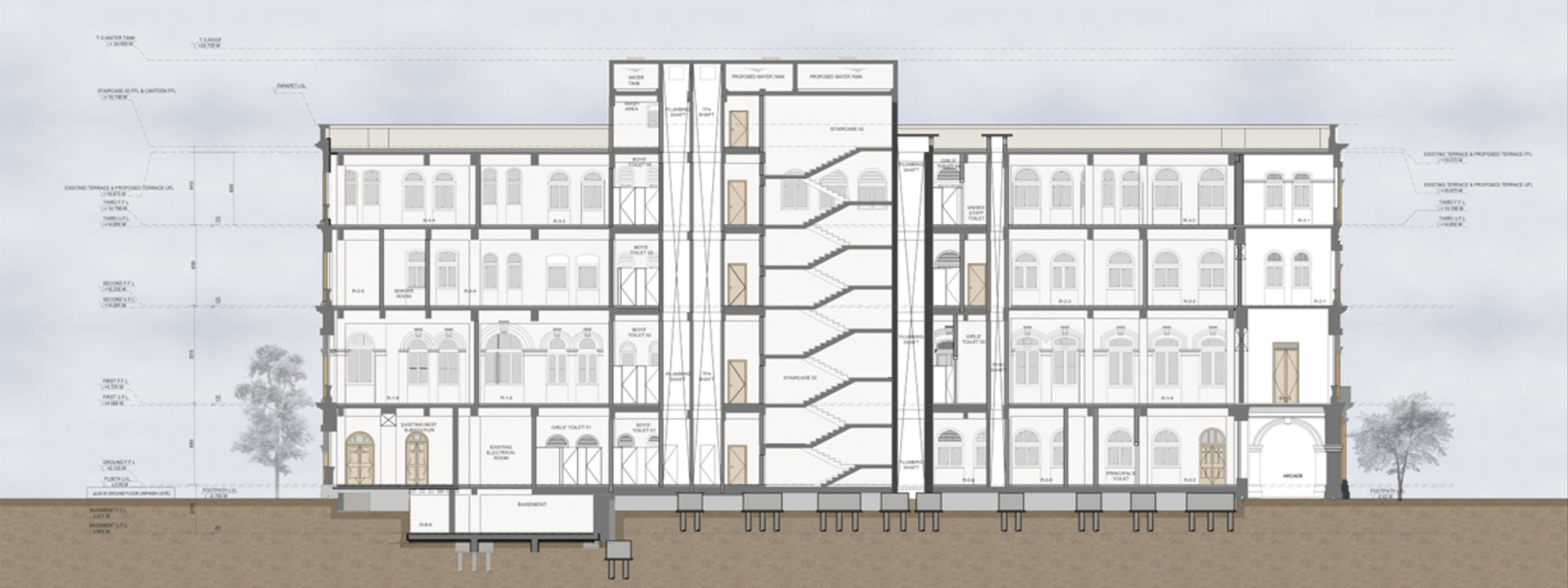
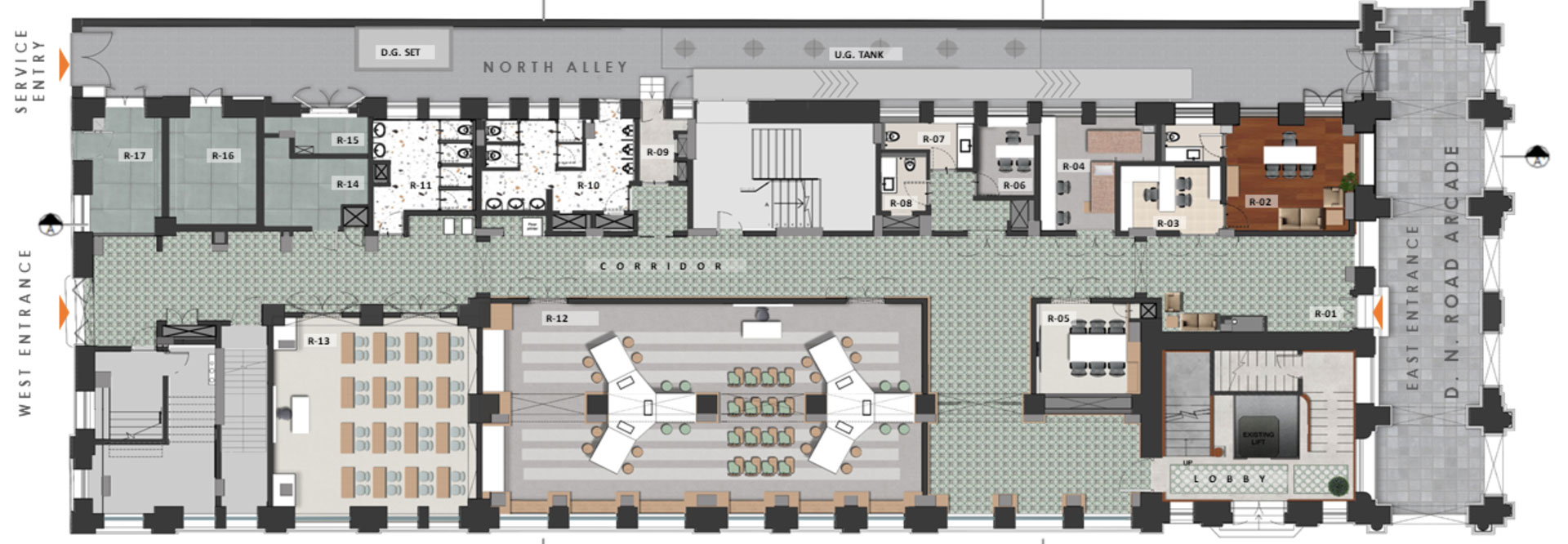
The design of the building paved way for upgraded functional insertions, required for a school. Post restoration, the basement of this G+3 structure is used primarily for storage, the ground floor is used for the principal’s administration and a few classrooms. Many of the classrooms, the library and laboratories are housed on the first, second and third floors. The cafeteria is located on the terrace giving captivating views of Mumbai’s skyline.
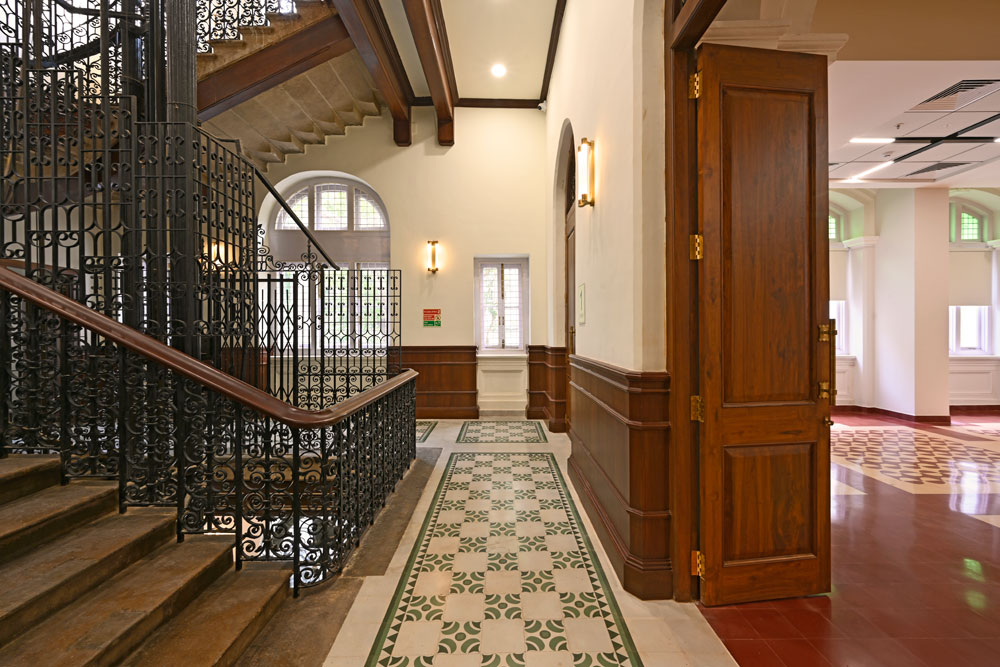
The structure comprises of one of the oldest lifts in Mumbai located in the main heritage stairwell. The elevator is placed inside an ornamented wrought iron cage with its original machinery fully functioning and is still intact. This elevator block is wrapped around with a beautiful cantilevered stone staircase.
Further design alterations and utilitarian measures were done to house a school. The first floor of the building still retains the arcade of Corinthian granite columns with original arched wooden doors and windows on all the floors. Special care was taken to preserve the building’s historic significance and visual integrity.
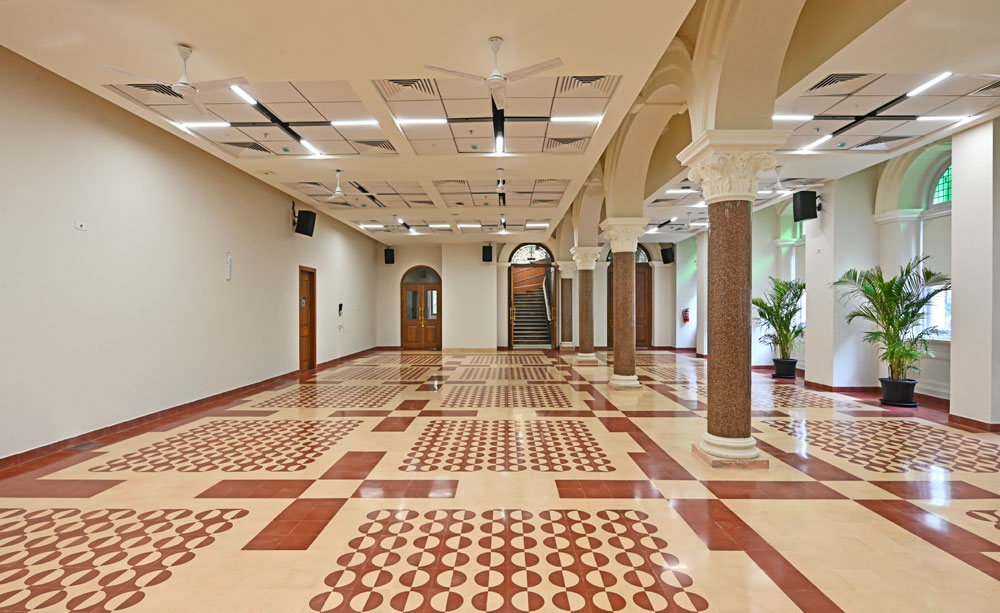
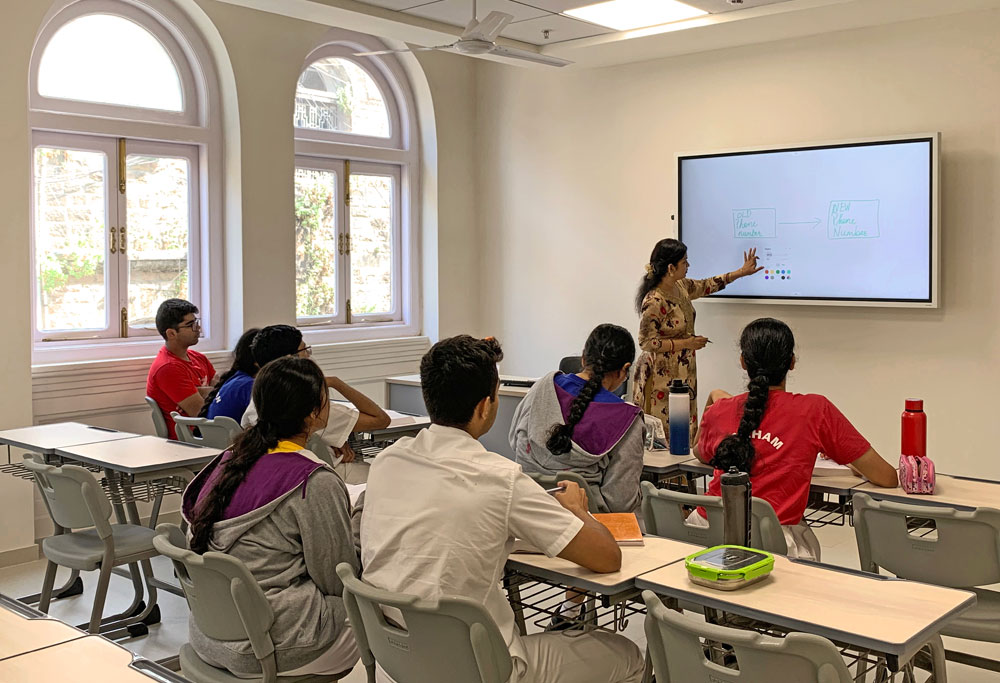
The atmosphere of a heritage building lends itself to inspiration and reflection, fostering a sense of reverence for knowledge and scholarship. As students engage in learning within these historic walls, they are inspired by the stories of those who came before them, motivated to leave their own mark on the world.
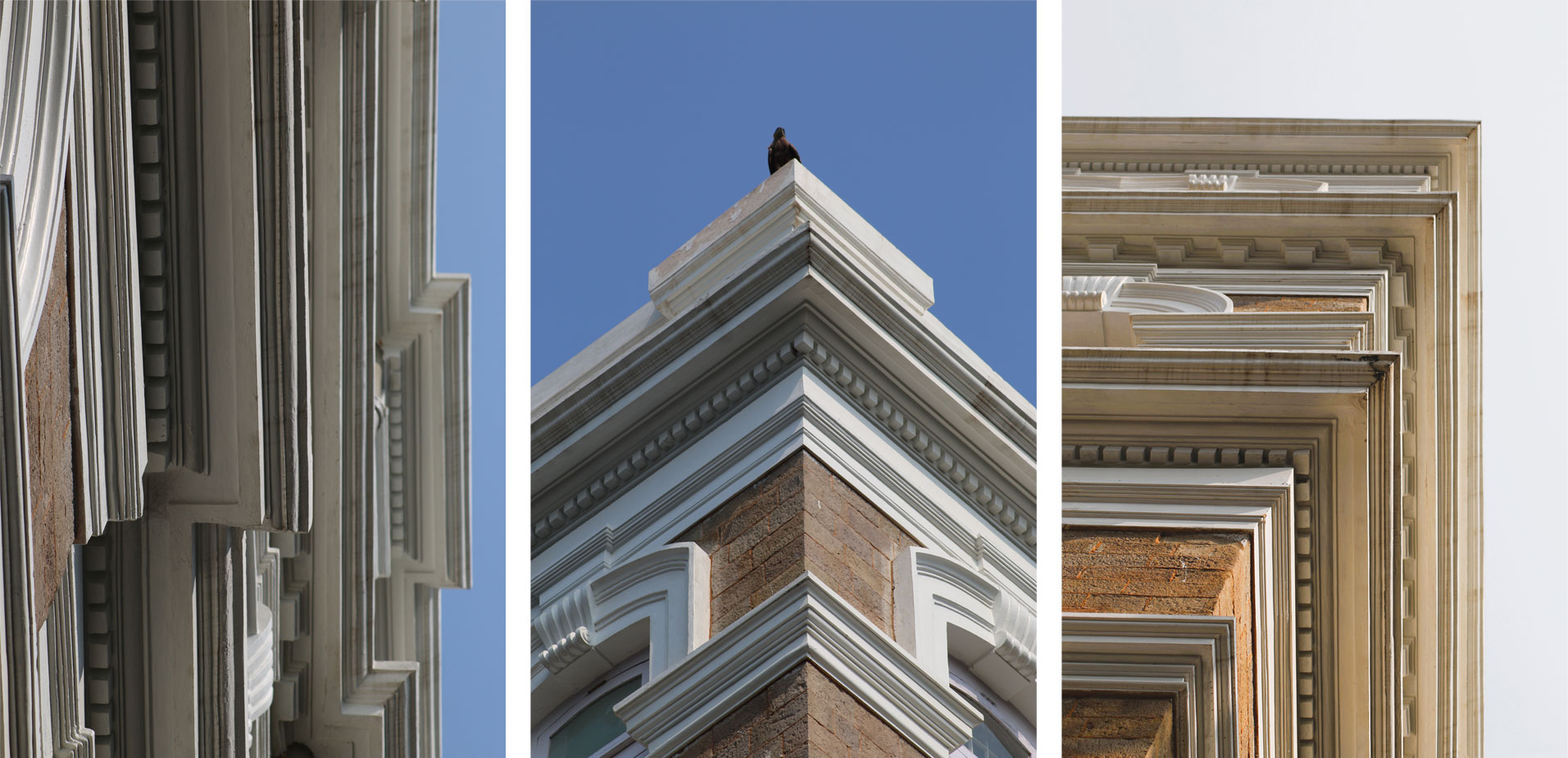
"As architects and conservationists, the essence of conservation means interpreting the past the way we see best and providing for the future without losing the spirit of the place."
- Brinda Somaya

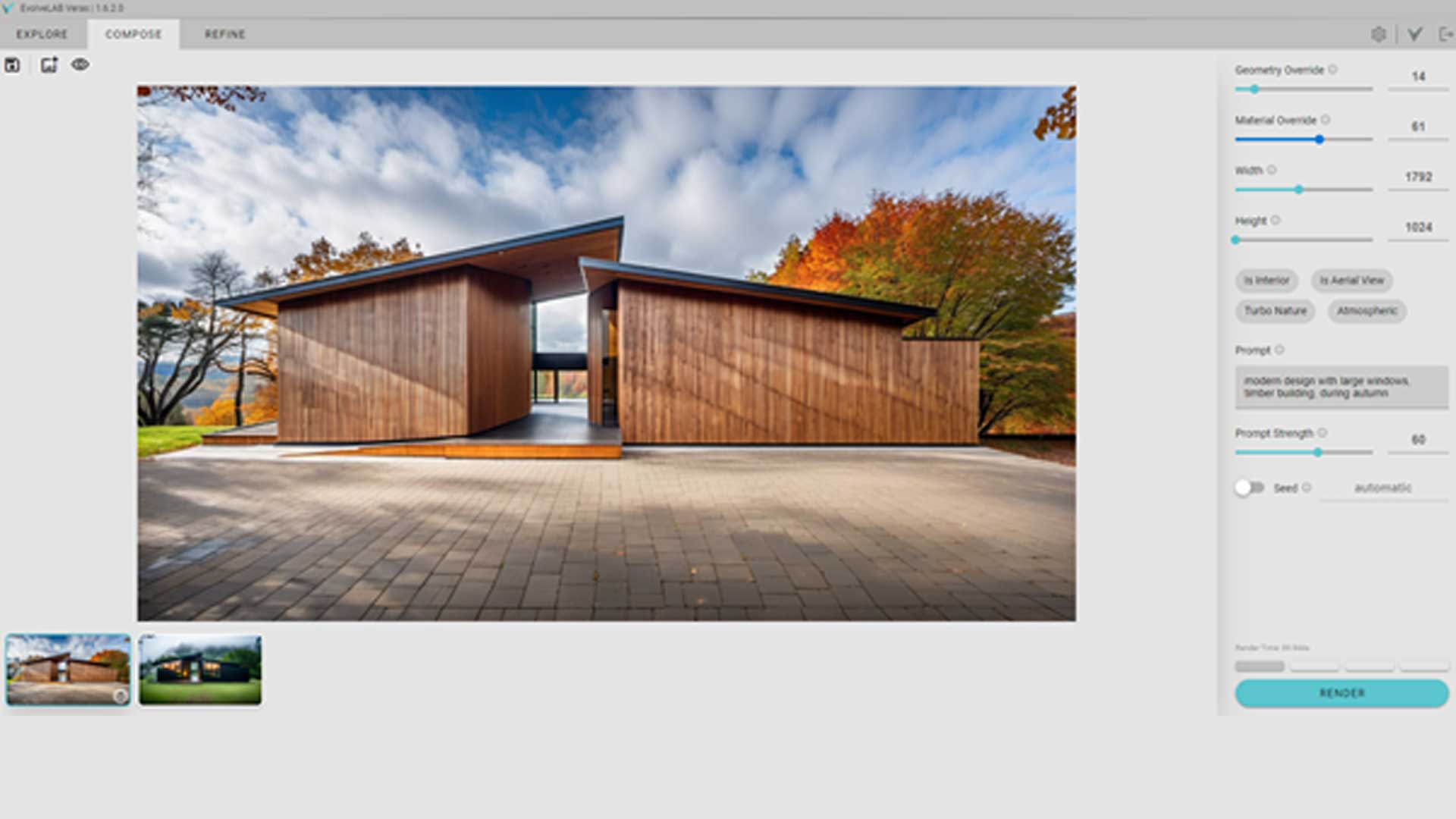
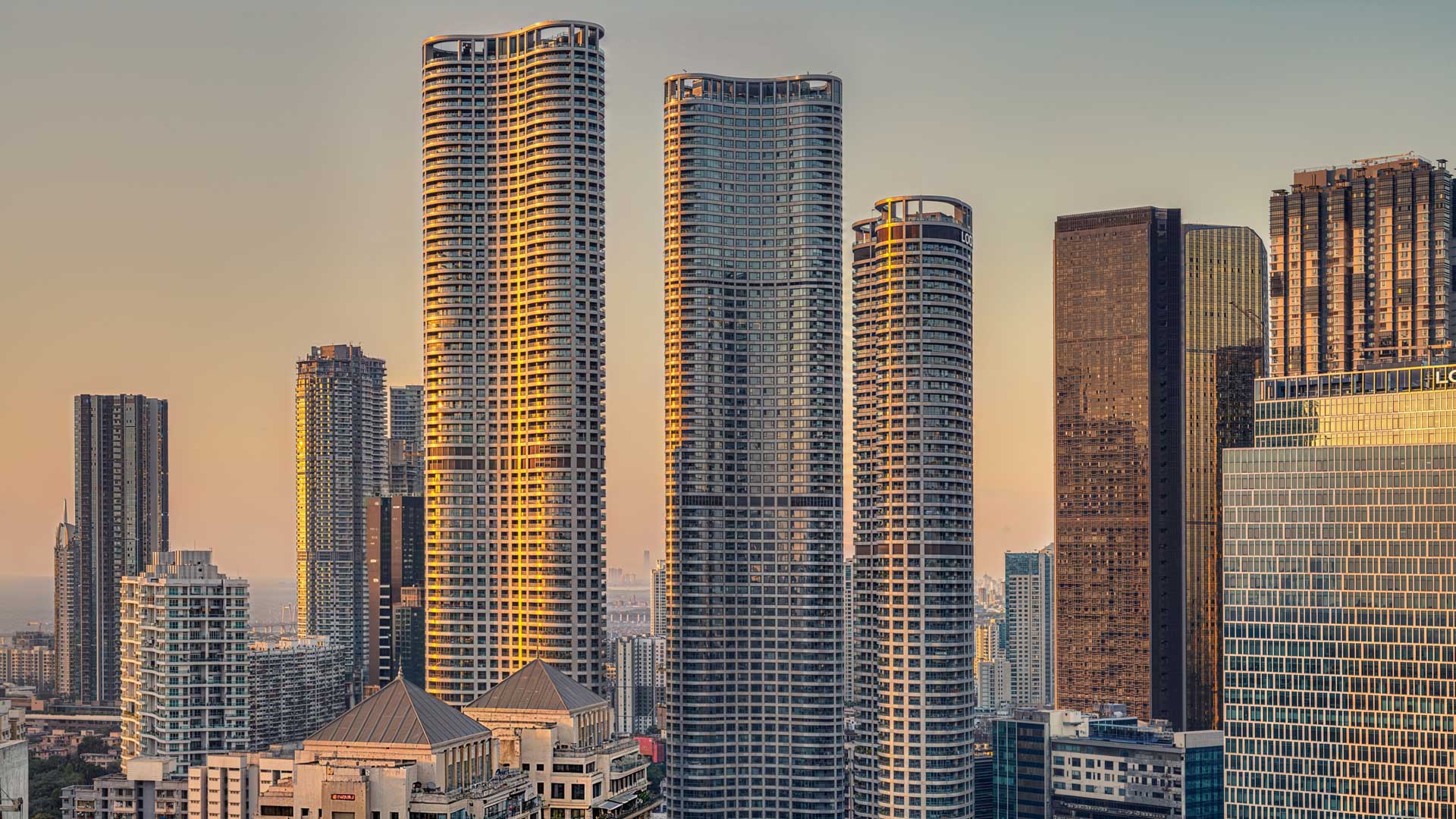
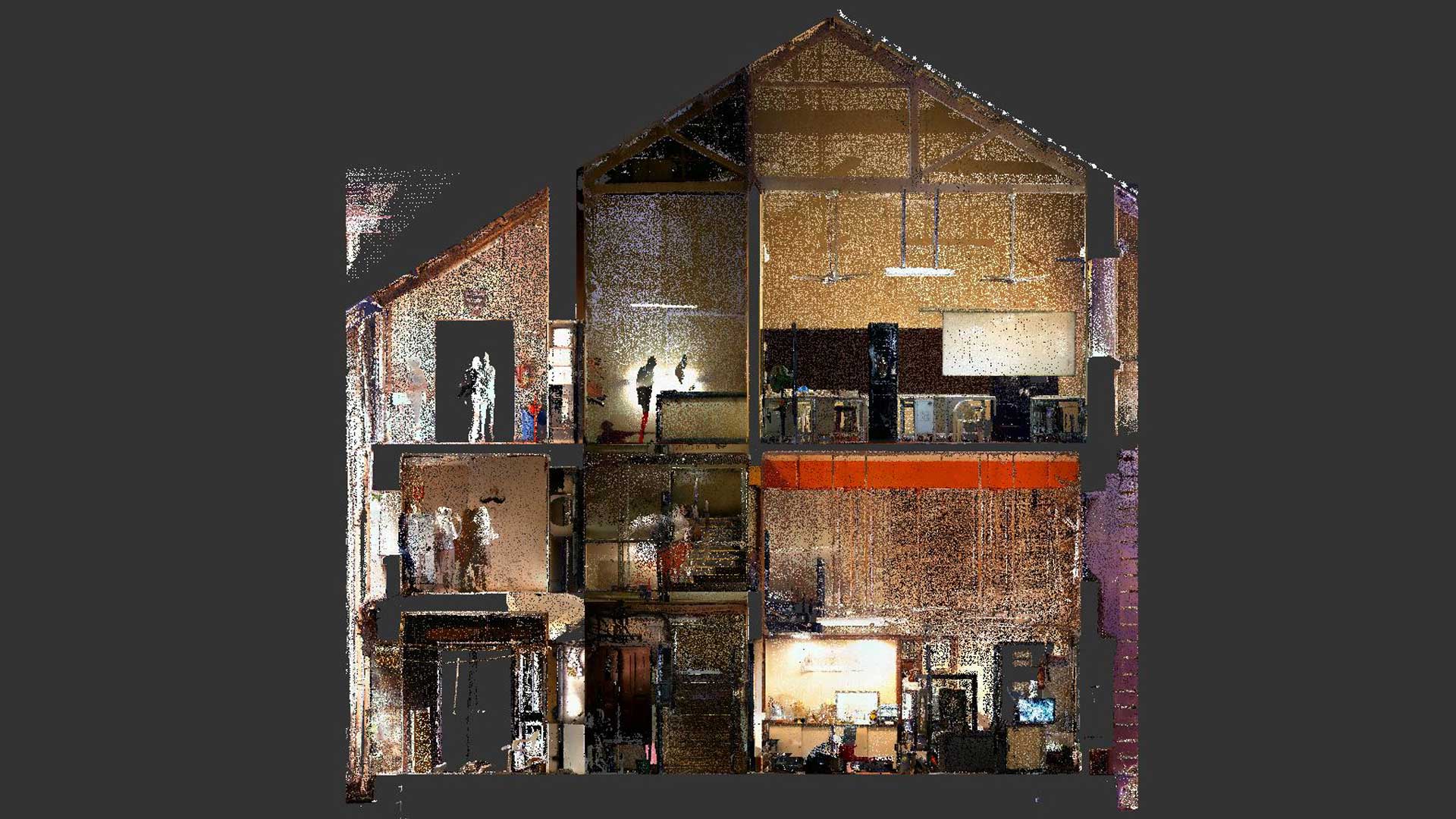
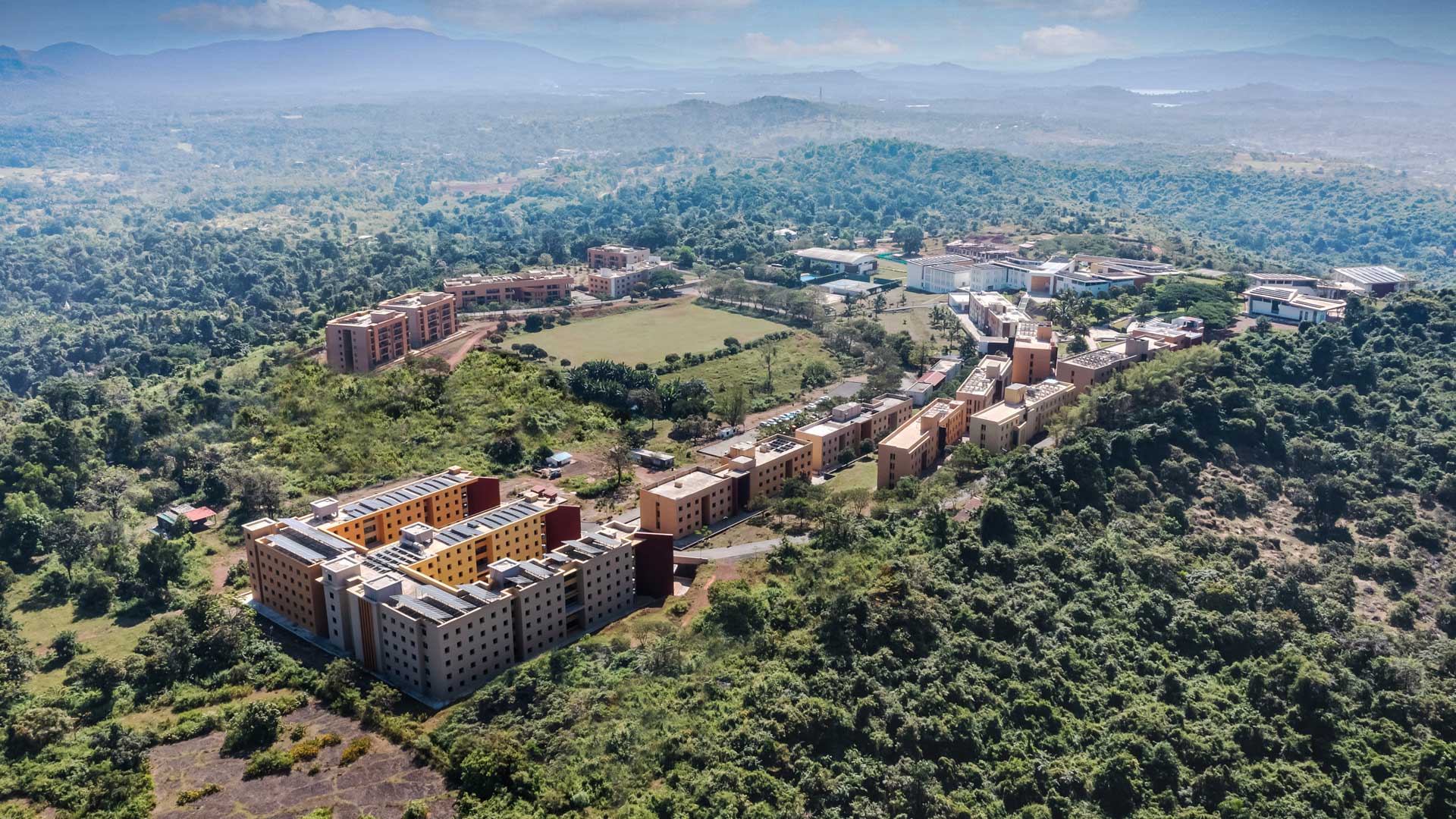
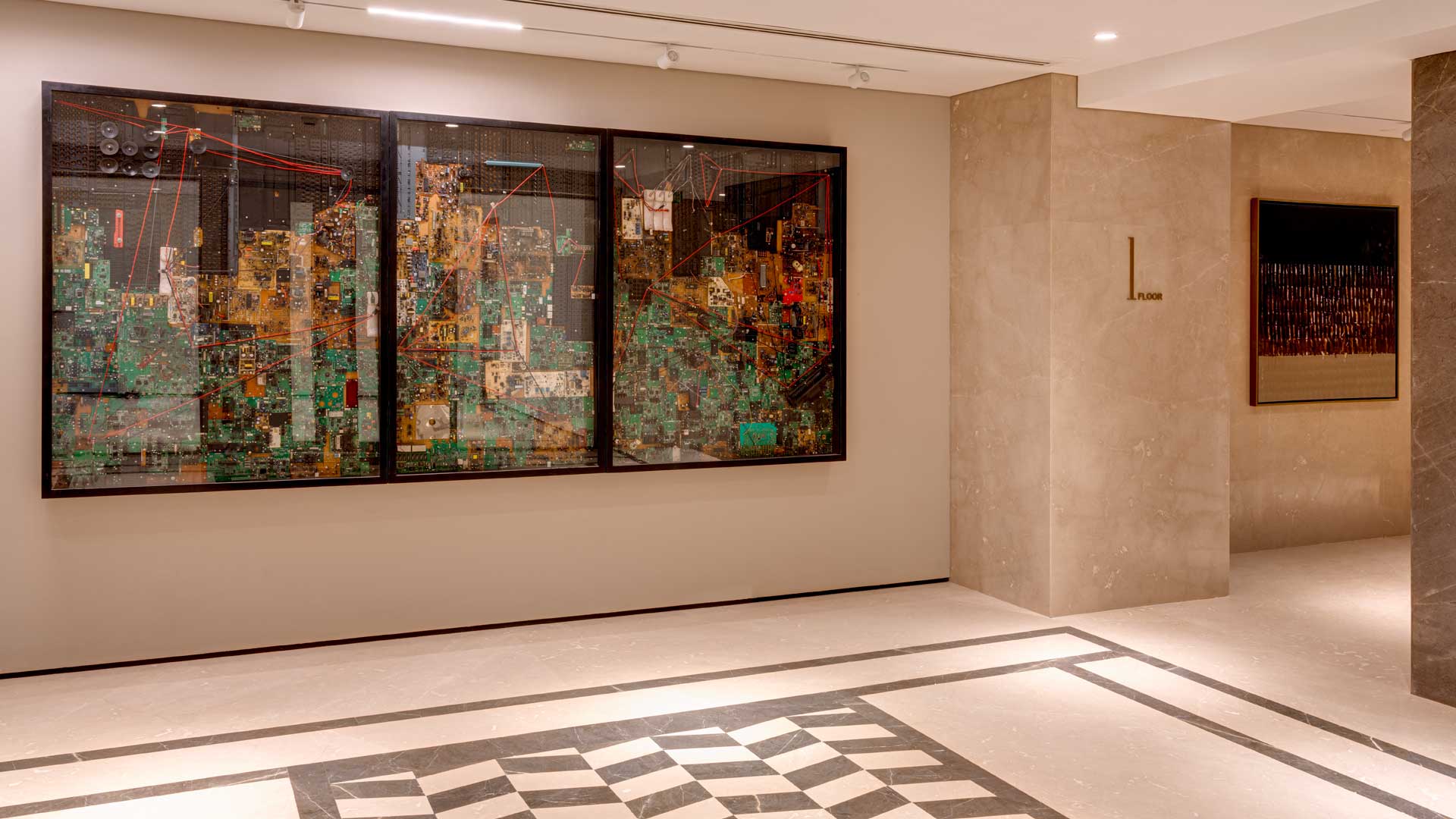
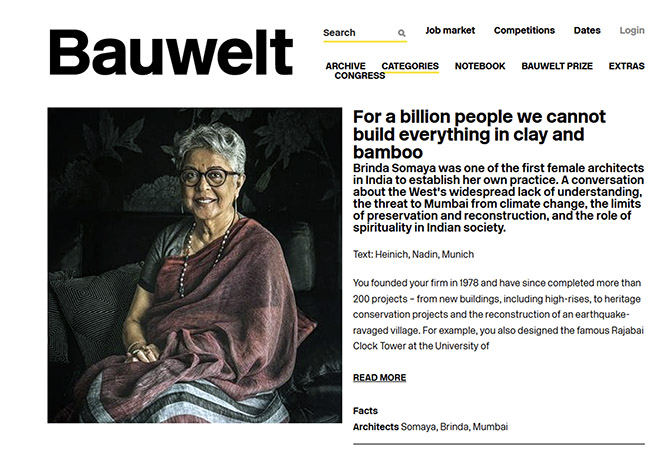
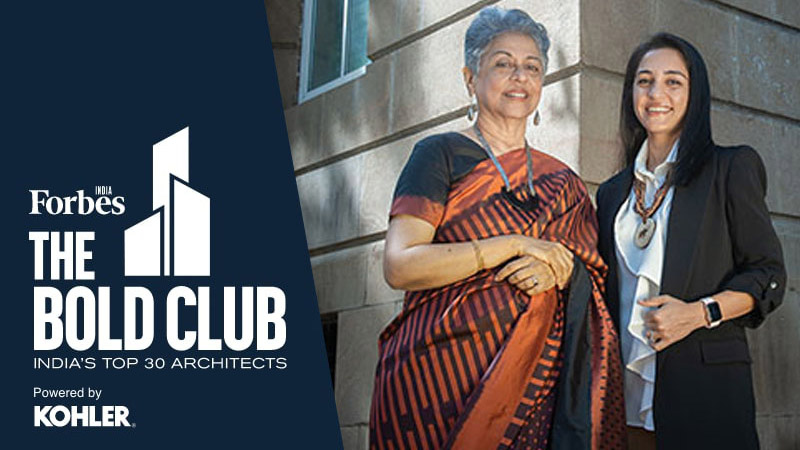

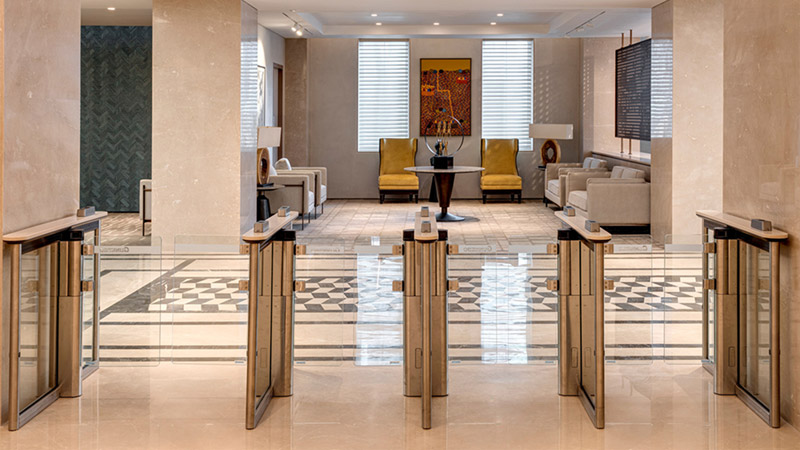
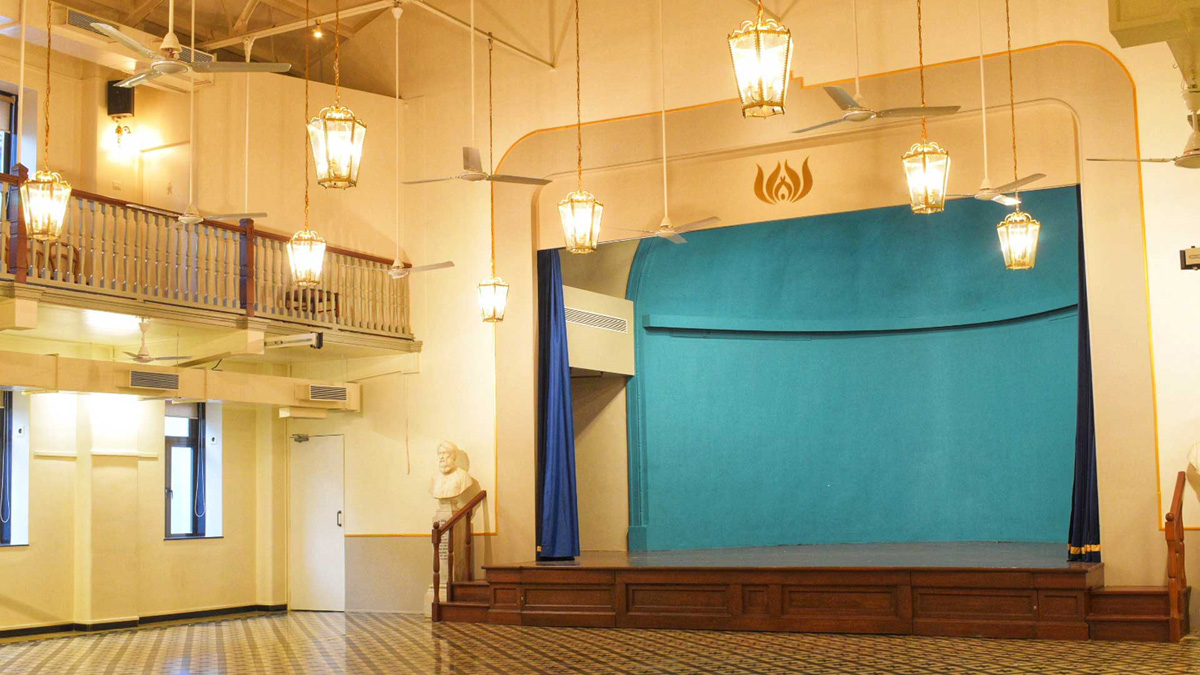
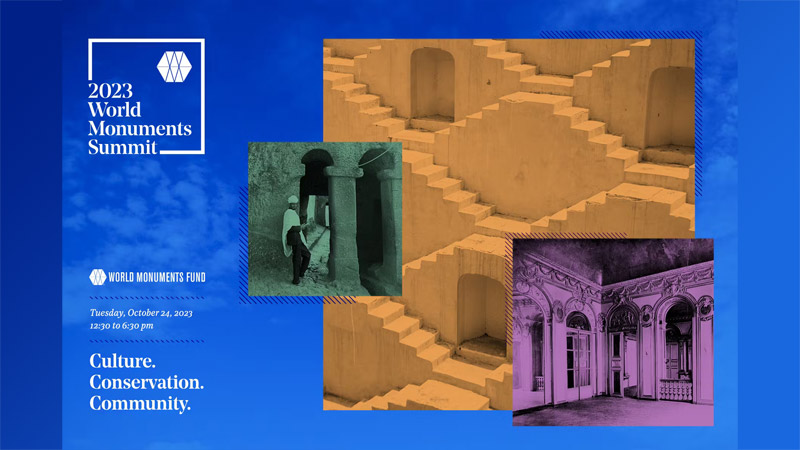
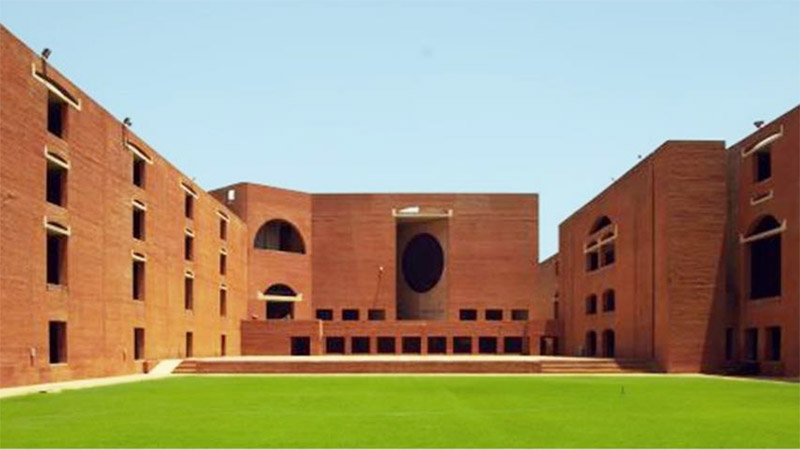
.jpg)
